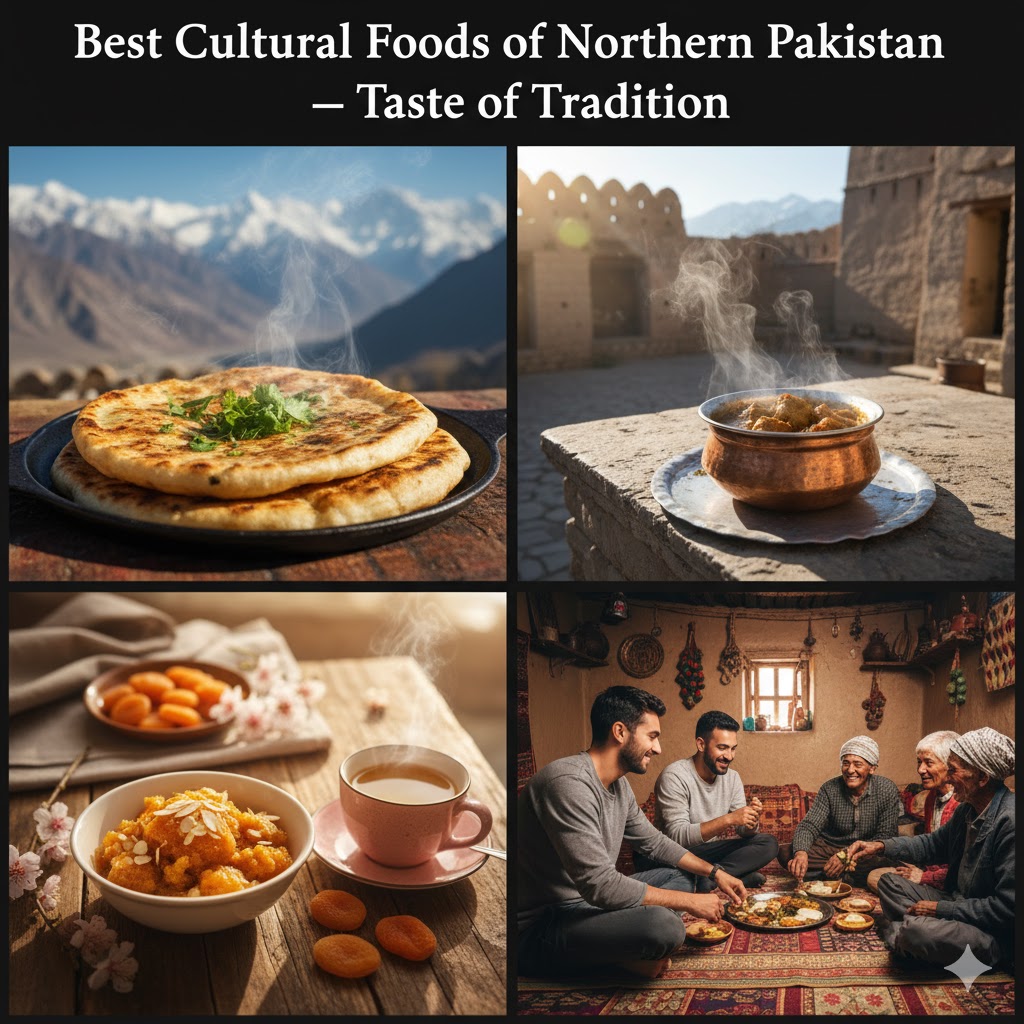Table of Contents– Cultural Foods of Northern
- Introduction — A Culinary Journey Through the North
- The Essence of Mountain Cuisine
- Gilgit-Baltistan — Apricot Valleys & Organic Heritage
- Specialties: Chapshuro, Gyaling, and Apricot Soup
- Hunza — The Valley of Longevity
- Walnut Bread, Diram Phitti, and Herbal Teas
- Skardu — Baltistani Comfort on the Plate
- Prapu, Mamtu, and Butter Tea Traditions
- Chitral & Kalash Valleys — Cultural Fusion of the Hindukush
- Kaghan, Naran & Fairy Meadows — Food for Adventurers
- Street Food Culture in Gilgit & Skardu Towns
- Local Tips, Markets & Home-Cooked Secrets
- FAQ Section — Culinary Travel in Northern Pakistan
1. Introduction — A Culinary Journey – Cultural Foods of Northern
If there’s one way to truly understand the heartbeat of Northern Pakistan, it’s through its food traditions — a centuries-old blend of Tibetan, Kashmiri, and Central Asian influences shaped by altitude, isolation, and pure mountain air.
Every valley here has its signature aroma — apricot oil sizzling in earthen pots, yak butter melting in stone kettles, and fresh trout roasting over river stones.
From the Hunza Valley’s longevity diet to Skardu’s high-altitude soul food, Northern Pakistan’s cuisine reflects not just taste but resilience, community, and sustainability. Travelers often say, “You come for the mountains, but stay for the meals.”
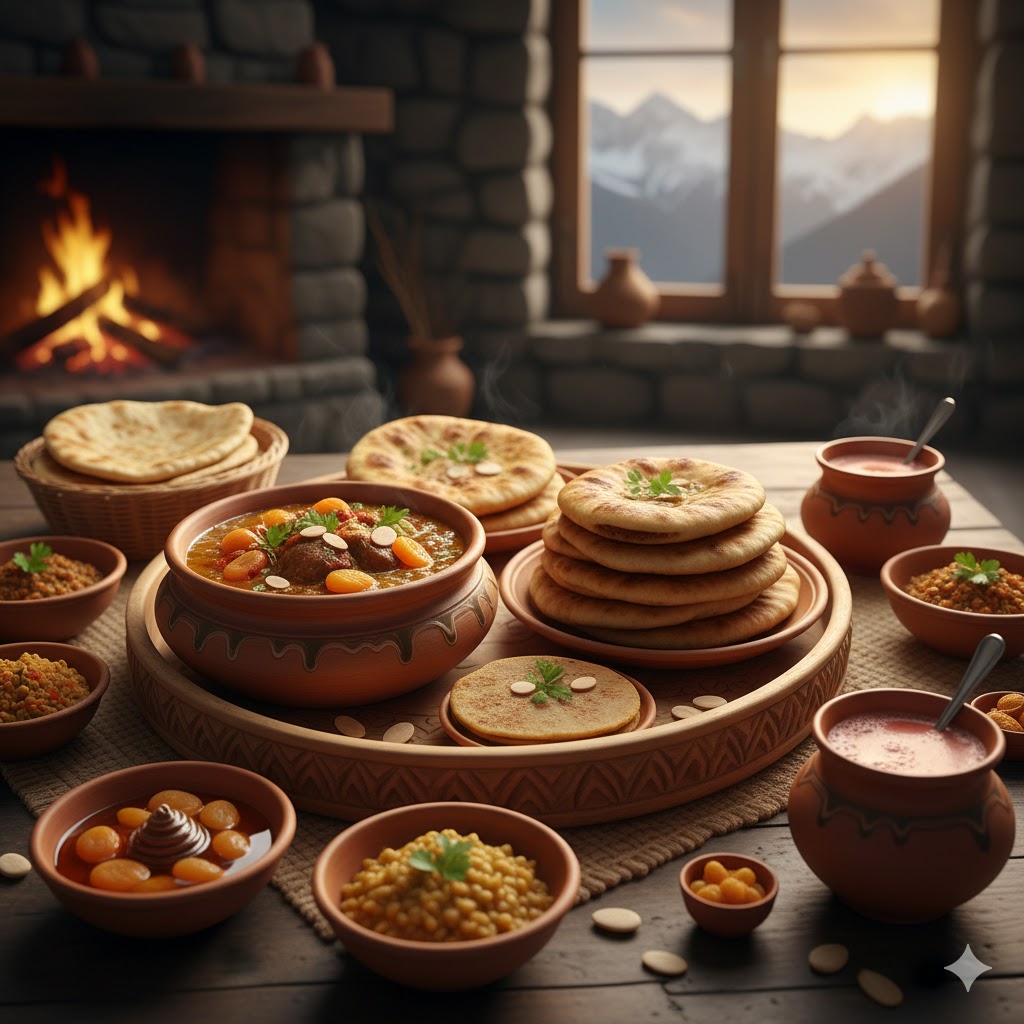
🍲 2. The Essence of Mountain Cuisine
In these highland regions, the climate shapes the menu. Winters are long and harsh, so the locals rely on dry fruits, grains, and organic vegetables preserved with care.
Meals are less about spice and more about purity, aroma, and nutrition — a contrast to the rich gravies of Punjab or Sindh.
Most traditional dishes use ingredients like:
- Buckwheat and Barley Flour
- Yak and Cow Milk
- Apricots, Mulberries, and Walnuts
- River Trout and Fresh Herbs
Cooking methods involve stone ovens (tandoors), wood-fired pots, and sun-dried preservation techniques — reflecting centuries of adaptation to mountain life.
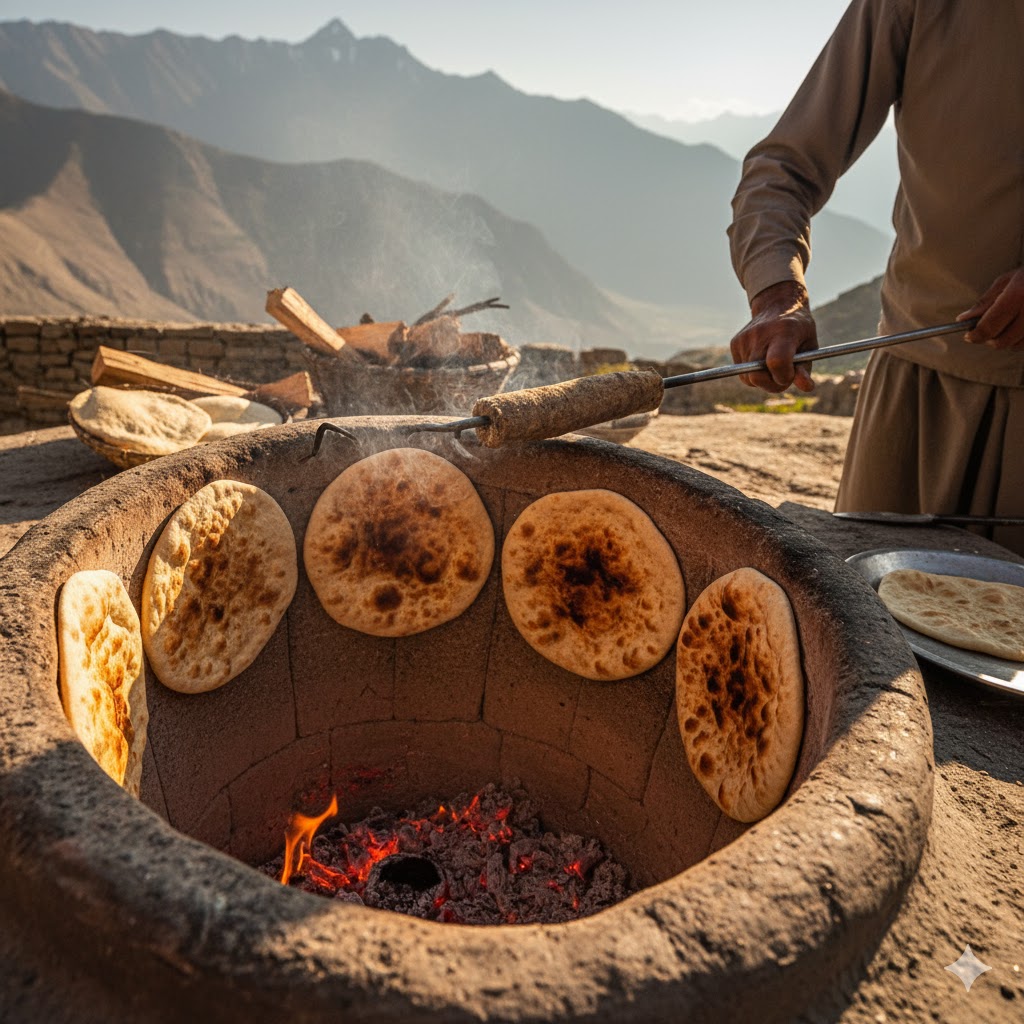
🍑 3. Gilgit-Baltistan — Apricot Valleys & Organic Heritage
In Gilgit-Baltistan, food is more than sustenance — it’s identity. The locals say, “Apricots are our gold.” Every part of the fruit is used — from oil for cooking to dried kernels in desserts.
🍞 Chapshuro — The Baltistani Meat Pie
A traveler favorite, Chapshuro resembles a spiced meat pie filled with yak or beef mince, onions, coriander, and mild herbs, sealed in thin bread, then cooked over a metal plate on wood fire.
It’s the comfort food of trekkers and porters returning from long glacier expeditions.
- Hidden Gem Tip: Try the Chapshuro Corner near Gilgit’s NLI Market — run by a woman-led cooperative using organic meat and local cheese.
- Approx. Price: PKR 400–600 per piece.
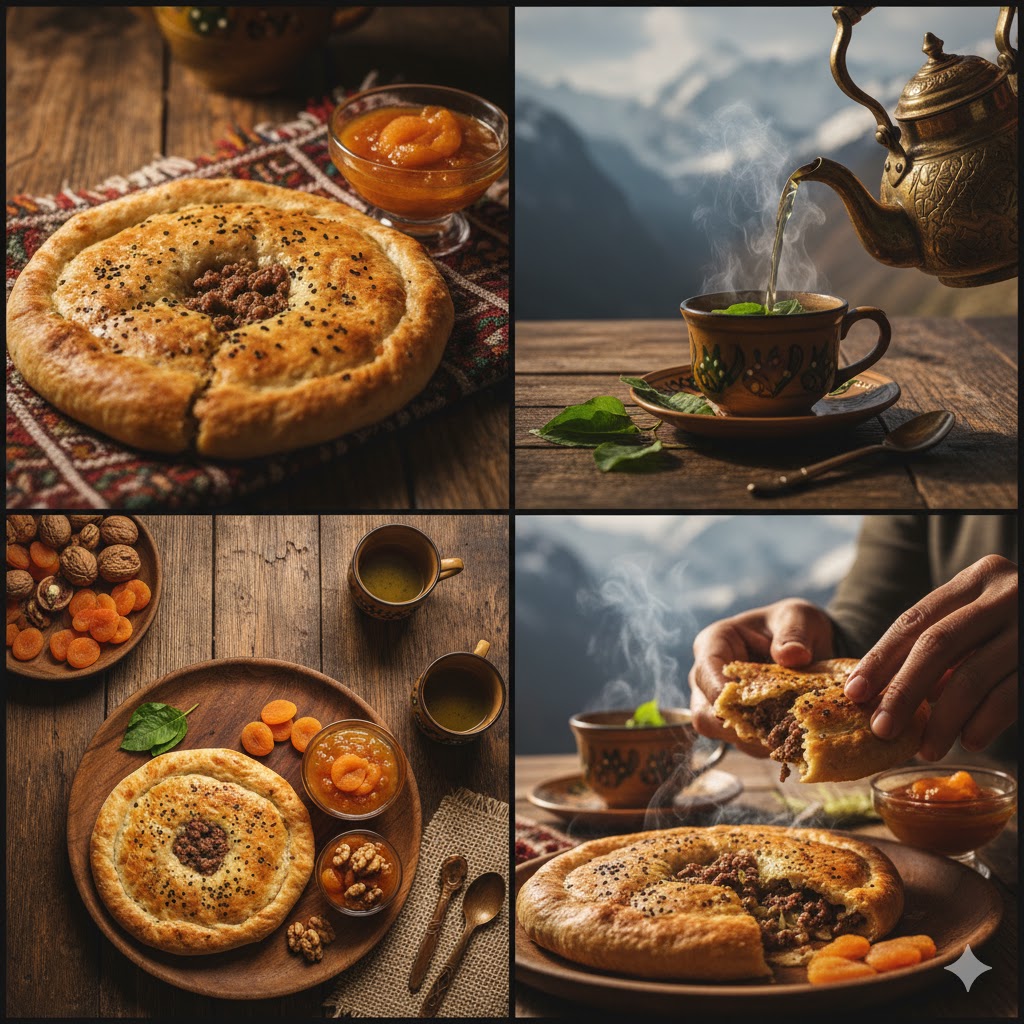
🥣 Gyaling — Pancakes of the Peaks
This light, fluffy buckwheat pancake is served with butter and apricot oil — often enjoyed at breakfast during spring planting season.
It’s also served to guests during Nowruz (Persian New Year) — a symbol of renewal and sharing.
Local Insight: You’ll find the best gyaling at family-run guesthouses in Danyor or Gahkuch villages — made on traditional stone pans.
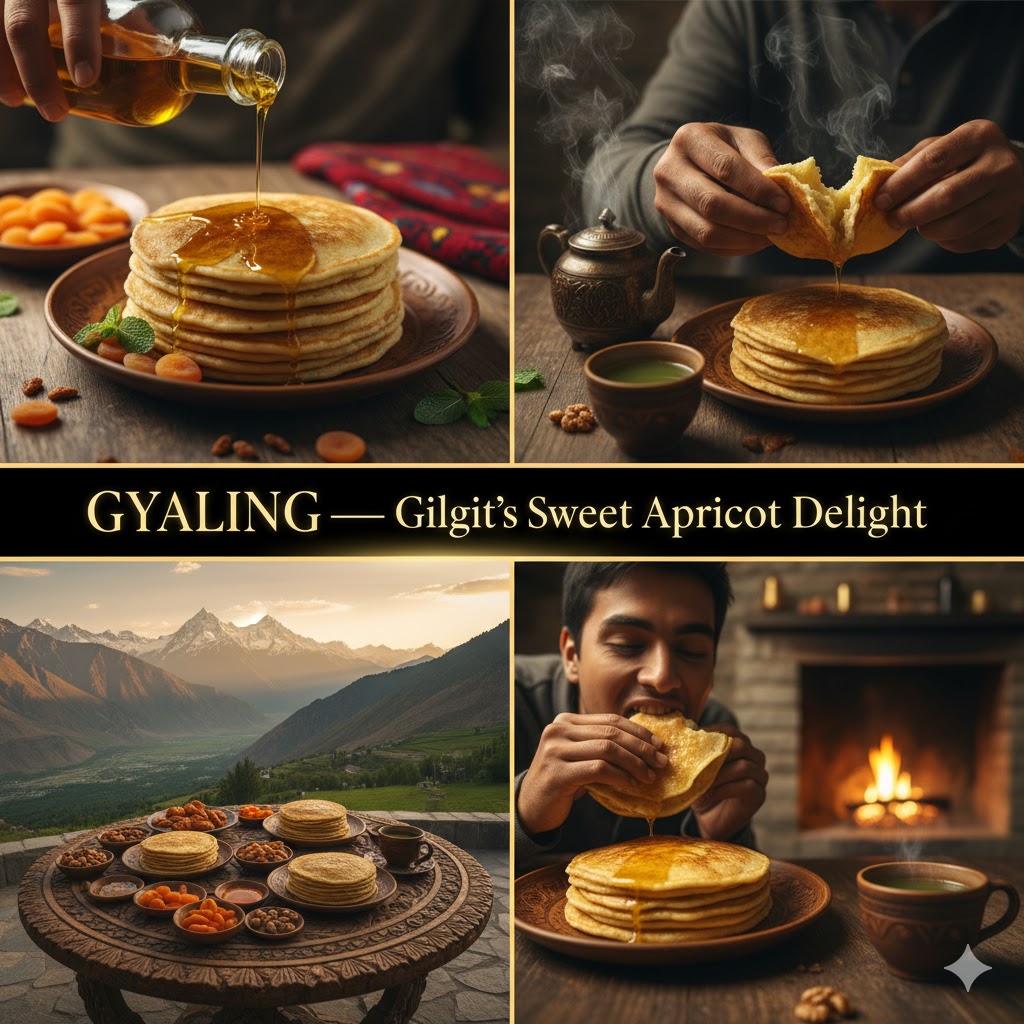
🍵 Apricot Soup (Dried Fruit Broth)
Made from rehydrated dried apricots simmered with barley flour and a touch of salt, this dish is both medicinal and ceremonial — often served to elders during winter for warmth and health.
Hidden Gem: The “Taste of Baltistan” eatery in Skardu serves a modern twist — apricot soup with almond shavings.
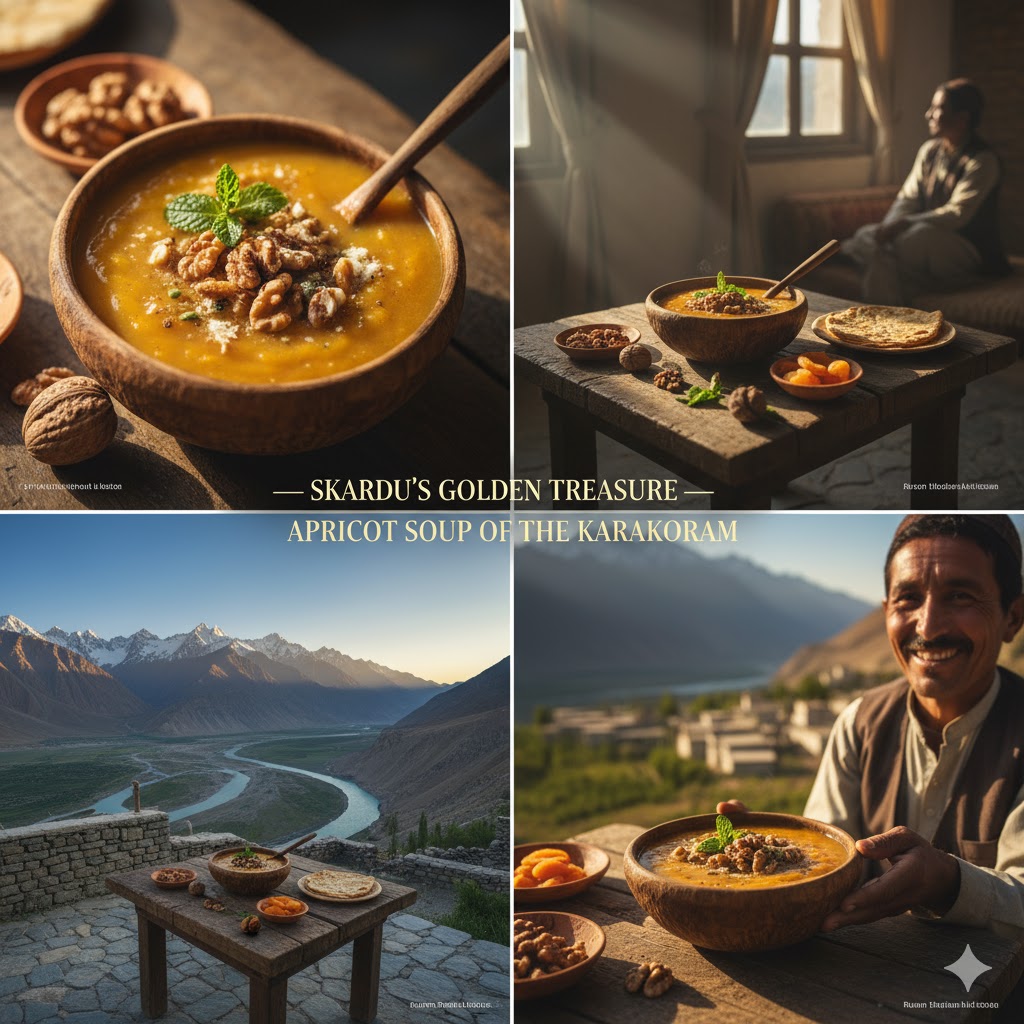
🍞 4. Hunza — The Valley of Longevity
Hunza’s cuisine is legendary for promoting long life and vitality — a blend of simplicity, natural produce, and clean water from glacial streams.
🥯 Diram Phitti — Sweet Flour Energy Bread
This is Hunza’s version of an energy bar — whole wheat flour slow-cooked in apricot oil, naturally sweetened, and eaten for breakfast before fieldwork.
It’s rich in fiber and antioxidants, often served with herbal teas.
Traveler Tip: Buy it fresh from Karimabad’s open bazaar stalls — the locals often pack it for long treks to Ultar Meadows.

🫓 Phapra — Savory Walnut Bread
Made with crushed walnuts and flour dough, Phapra is baked on flat stones near an open fire. It’s paired with salty butter tea or a light lentil soup.
Cultural Note: In Hunza, sharing Phapra with guests is a mark of respect — it’s said to “warm the heart and the home.”
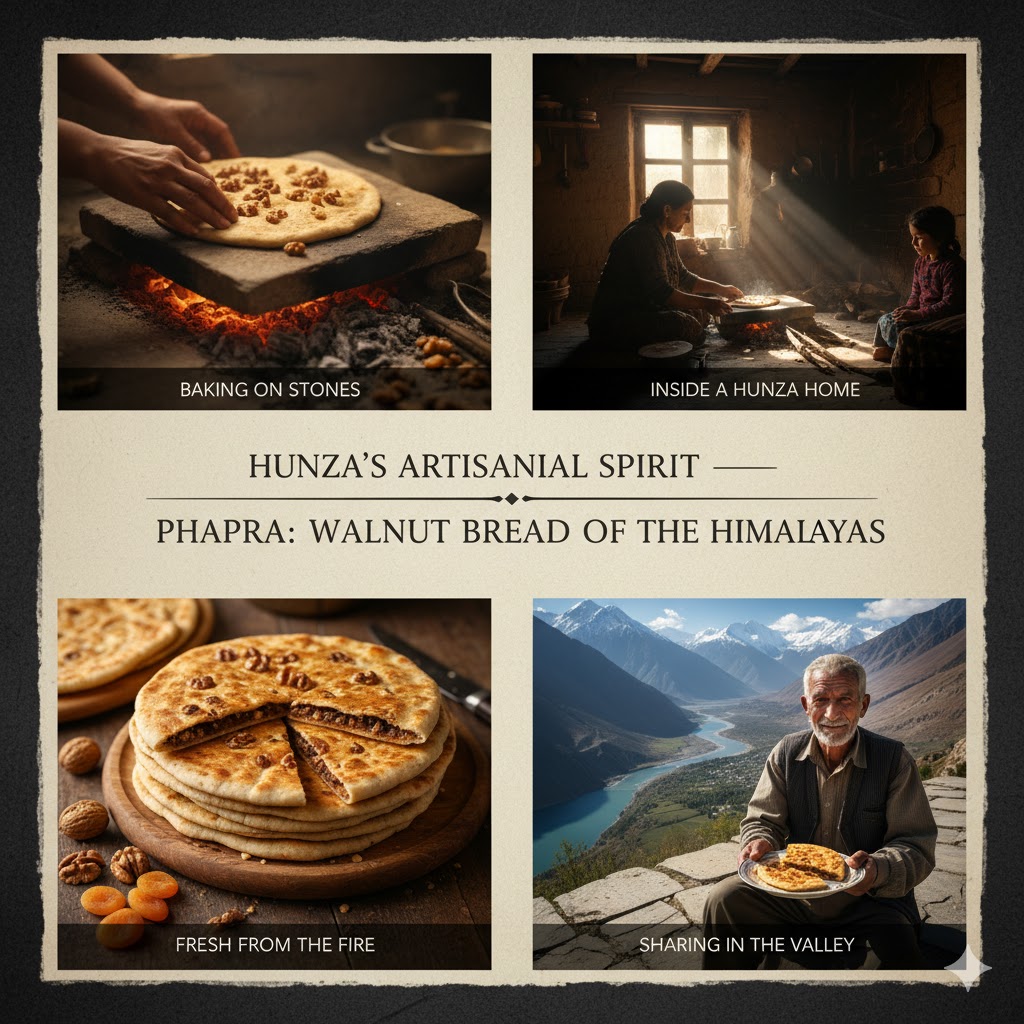
🍃 Tumuru Tea — Herbal Longevity Brew
A soothing mountain tea made with wild thyme (tumuru), often collected from the rocky slopes above Karimabad.
It’s believed to aid digestion and increase energy at high altitudes.
Hidden Gem: Ask for Tumuru tea at Café De Hunza — they serve it with a honey twist and scenic terrace view of Rakaposhi.
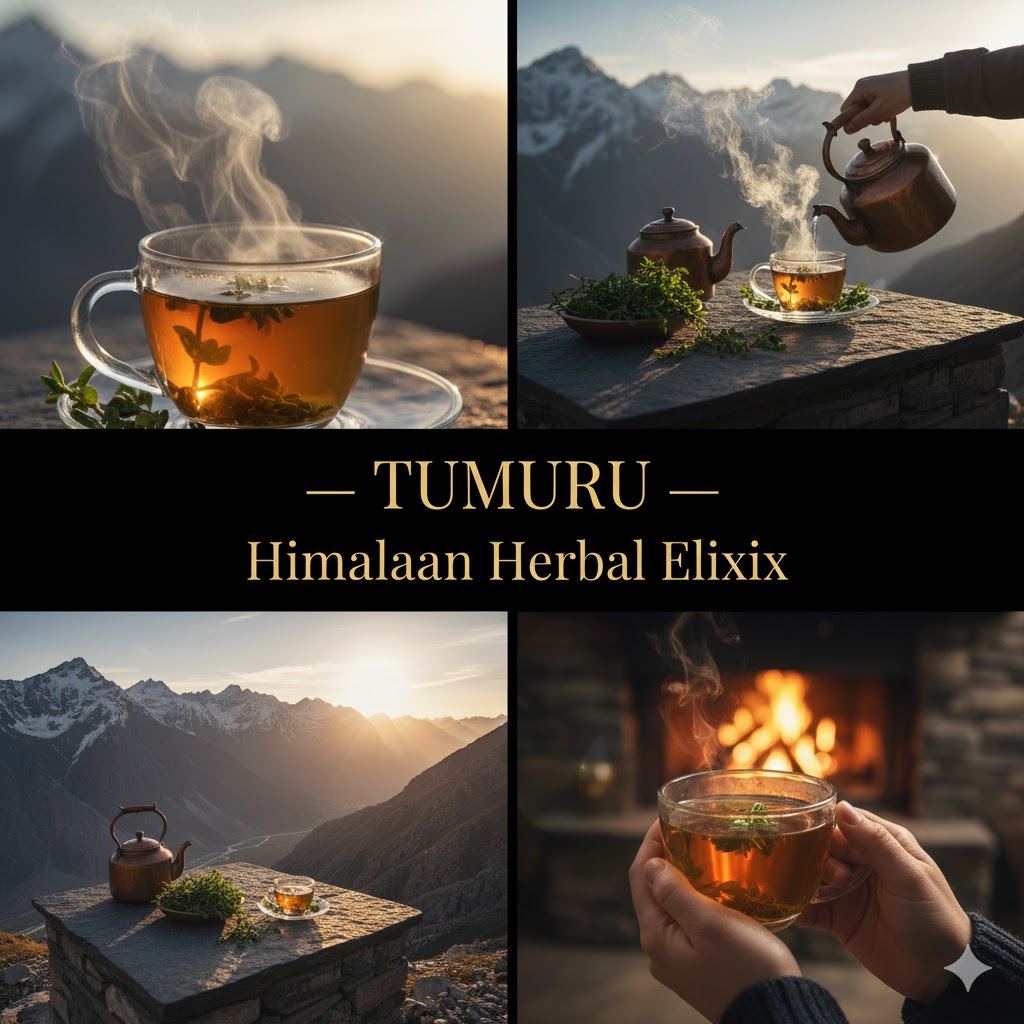
5. Skardu — Baltistani Comfort on the Plate
The Baltistan region, known as “Little Tibet,” offers a cuisine that’s humble, hearty, and healing — built around stone-ground grains, wild herbs, yak butter, and apricots. Locals describe their meals as “food made for the soul and snow.”
🥟 Mamtu — The Baltistani Dumpling Delight
A traveler’s favorite, Mamtu is Baltistan’s version of steamed dumplings — filled with spiced minced beef or yak, chopped onions, and garlic, steamed in bamboo baskets over simmering pots.
Its origin traces back to Central Asian traders along the Silk Route, and today it’s a staple in every household and roadside café from Skardu town to Shigar.
- Hidden Gem Tip: Visit “Mamtu Point” near Sadpara Lake road for fresh, hand-folded dumplings with a view of the blue lake.
- Average Price: PKR 350–500 per plate.
- Local Tradition: Mamtu is often served during winter family gatherings and new home blessings.
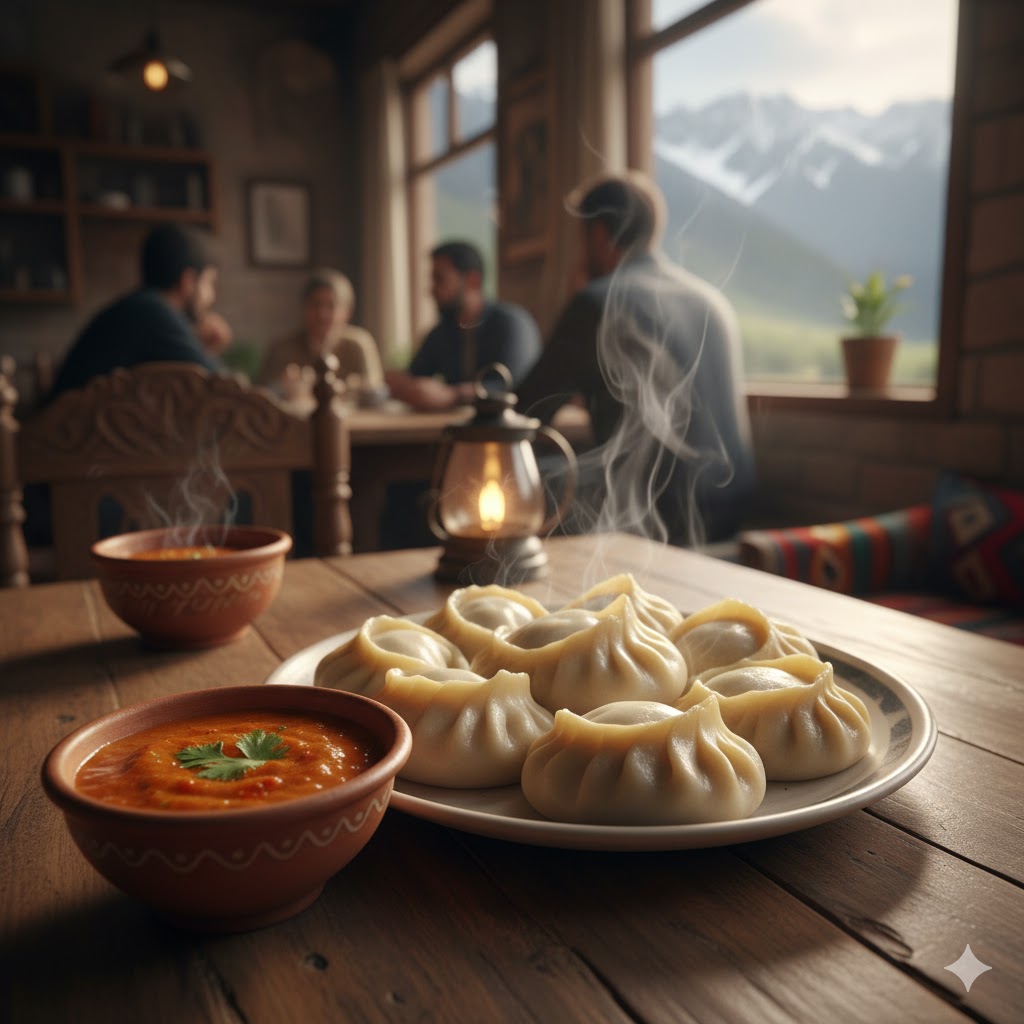
🍜 Prapu — The High-Altitude Noodle Soup
Another staple, Prapu is a warming noodle soup prepared with buckwheat noodles, spinach, butter, and yak milk. It’s a local cure for cold and altitude sickness.
It’s particularly cherished by trekkers on their way to Deosai Plains, where temperatures drop suddenly even in summer.
- Hidden Gem: Try Prapu at Kharpocho View Café, a rooftop eatery below Skardu Fort.
- Cultural Insight: Prapu is also served at wedding feasts as a sign of health and hospitality.
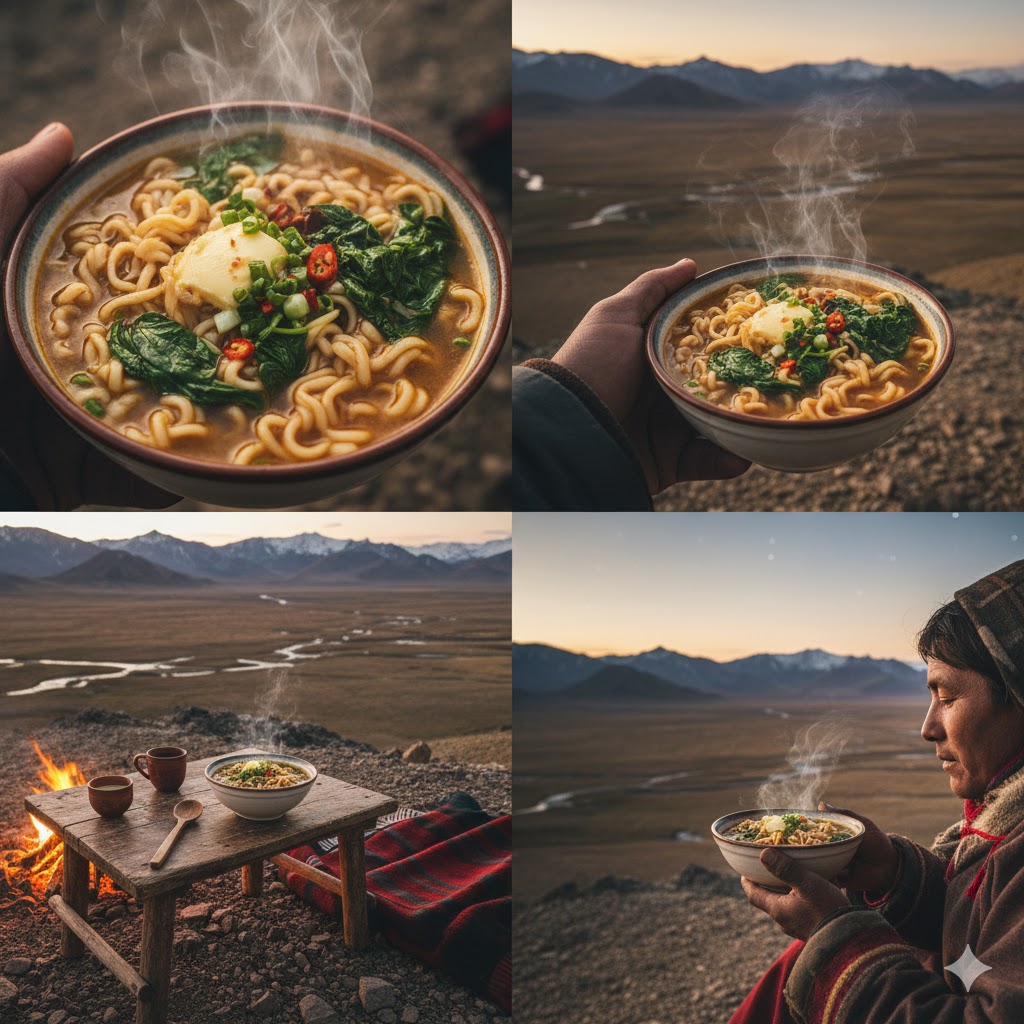
☕ Butter Tea — The Drink of the Peaks
Known locally as “Gur Gur Chai,” this thick, salty tea is made from green tea leaves, yak butter, milk, and salt.
While it might surprise newcomers, it’s essential for staying warm and hydrated at high altitudes.
- Pro Tip: Always sip slowly — locals say “Butter tea warms the bones before the heart.”
- Where to Try: Baltistan Cultural Restaurant, Skardu city.
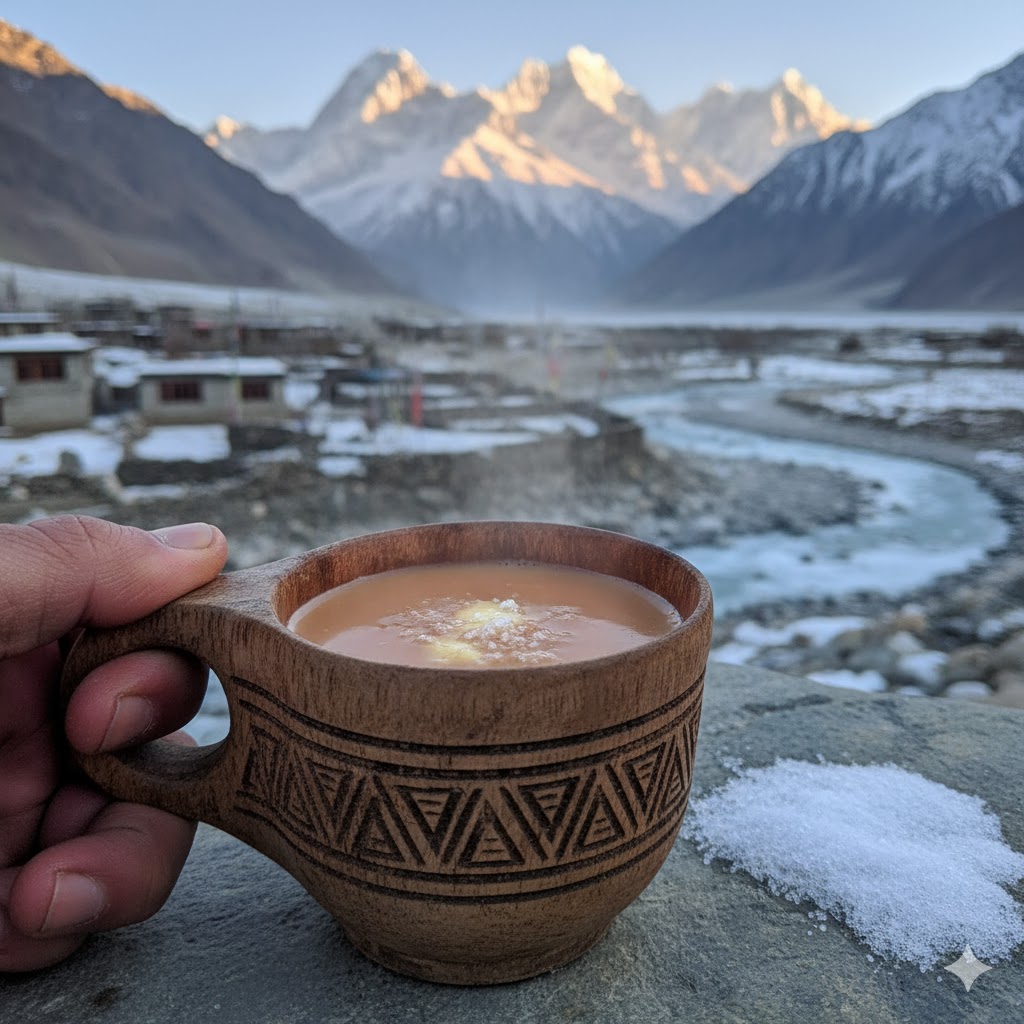
🍡 Khurba — Dried Apricot Bars
Khurba is a naturally sweet treat made by drying crushed apricots under the mountain sun. Locals carry it during long treks — it’s lightweight and packed with vitamins.
- Hidden Gem: In the villages of Shigar and Khaplu, women still use stone grinders to make Khurba traditionally.
- Average Price: PKR 200 for a pack of 5 bars.
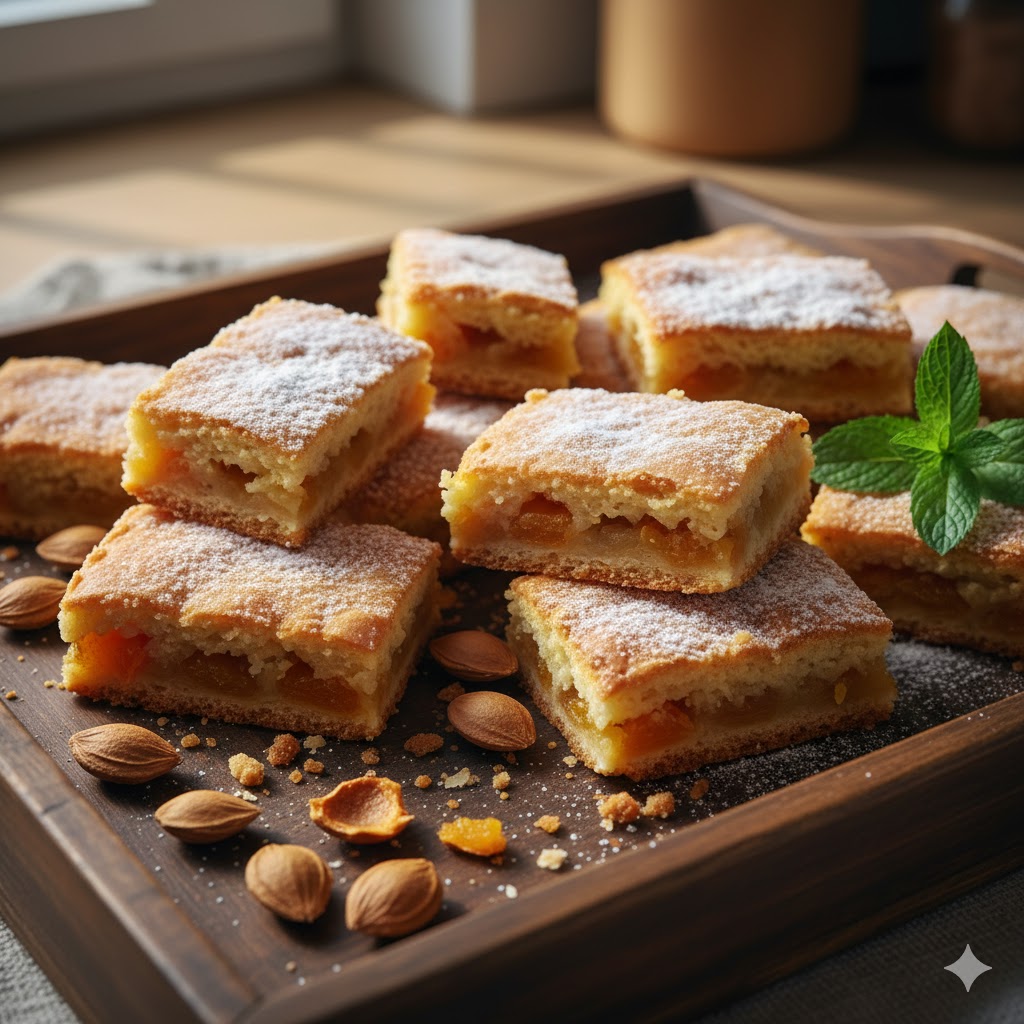
🌿 6. Chitral & Kalash Valleys — Food of the Hindukush
Nestled between Afghanistan and Gilgit, the Chitral and Kalash valleys offer a culinary experience unlike anywhere else in Pakistan — a fusion of Persian, Afghan, and local mountain flavors.
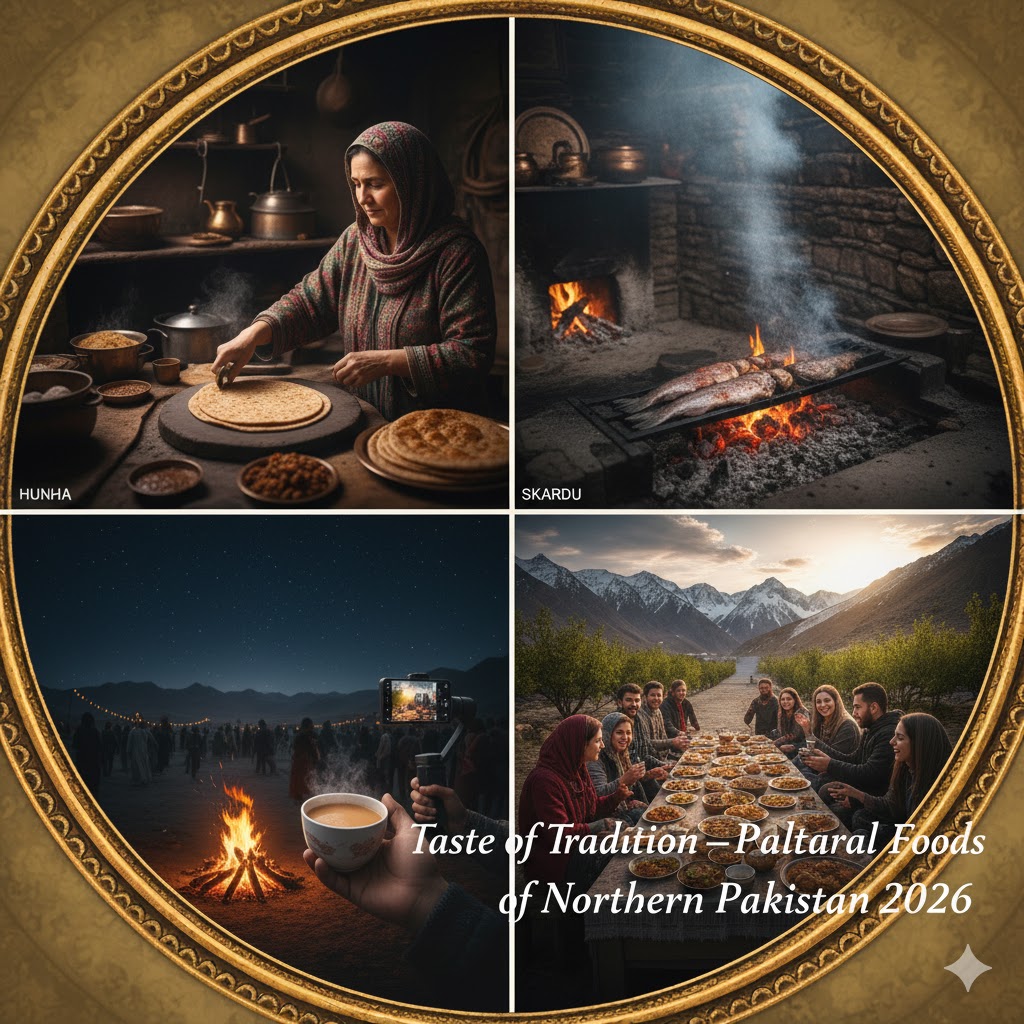
🥗 Kalashi Bread & Cheese — The Festival Food
During festivals like Joshi (Spring Festival) and Uchal (Harvest Festival), locals prepare flat barley bread, goat cheese, and wild honey.
- Tradition: The bread is served with wine made from grapes and mulberries, symbolizing fertility and joy.
- Hidden Gem: Try authentic Kalash bread at “Kalash House” guesthouse in Bumburet Valley.
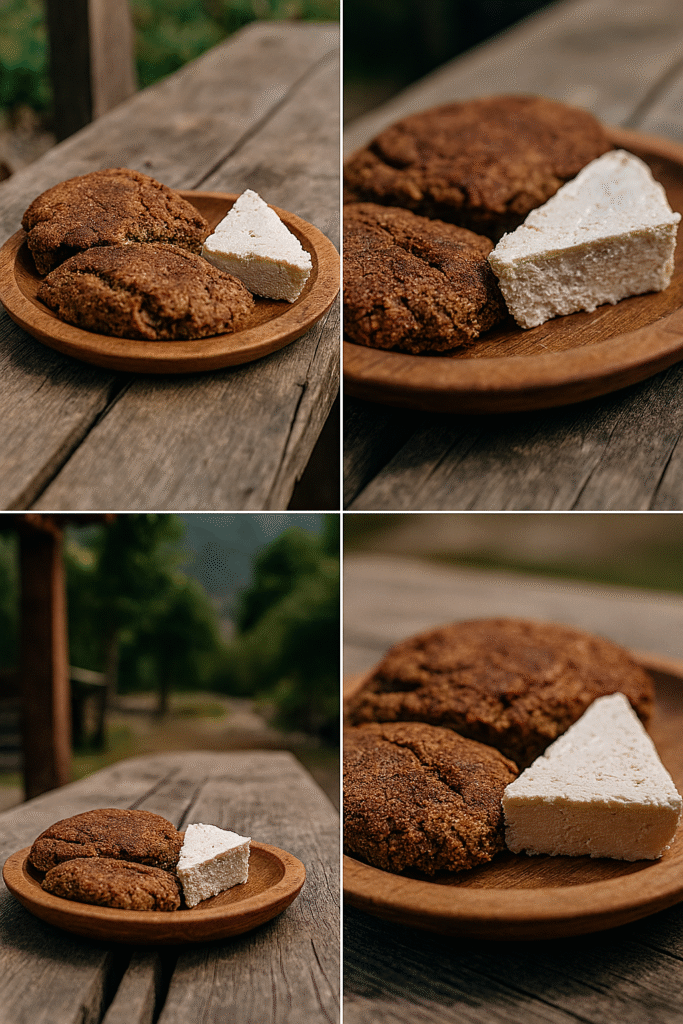
🍖 Chitrali Seekh — Charcoal-Grilled Meat
Unlike the spicy kebabs of Karachi, Chitrali Seekh uses mountain herbs, salt, and yogurt marinade only — simple but aromatic.
It’s often grilled over cedar wood, giving it a unique smoky flavor.
- Traveler Tip: Visit the Shahi Bazaar food stalls in Chitral town after sunset for authentic taste.
- Average Price: PKR 500 per plate with naan.
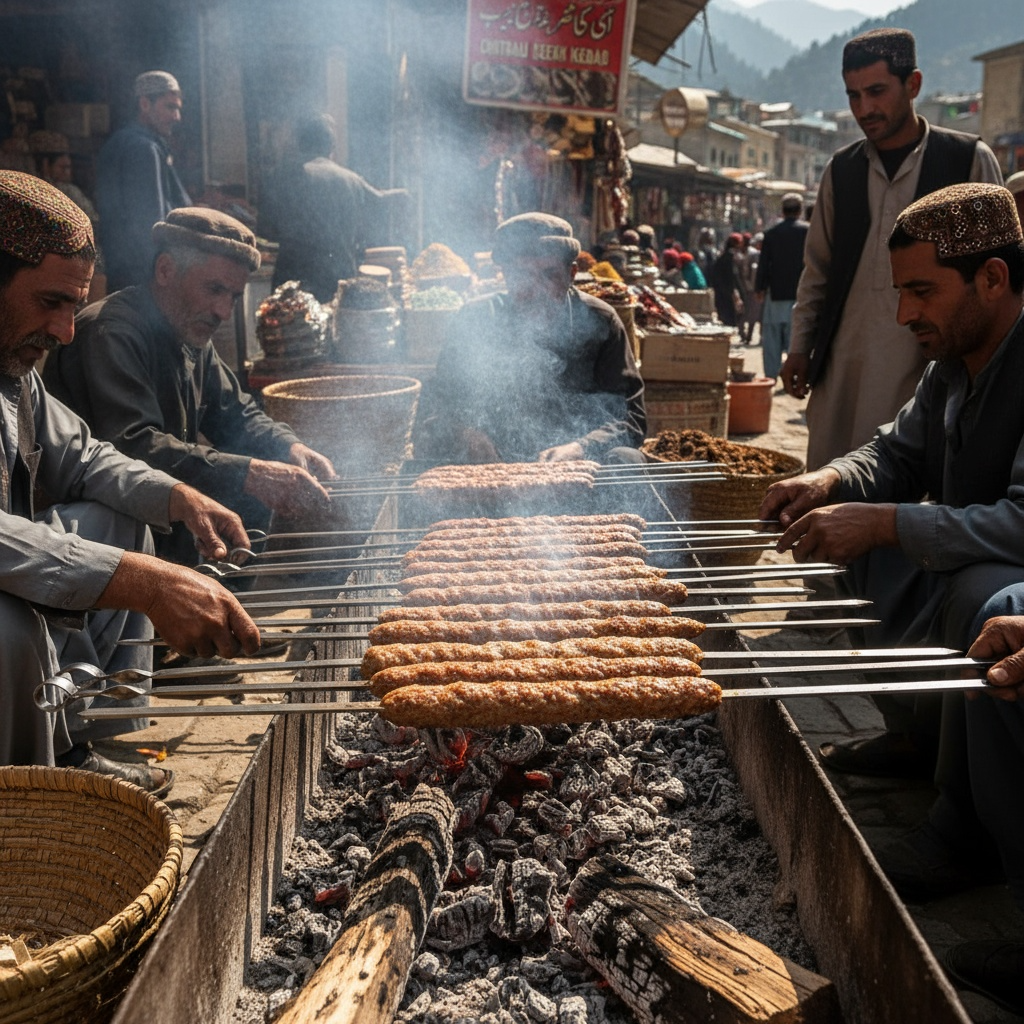
🍛 Khowruk — Lentil and Wheat Porridge
A traditional Kalash winter meal, Khowruk is a rich porridge made of lentils, wheat flour, and goat butter — served during cold months or after snow rituals.
Cultural Note: Elders say eating Khowruk “binds warmth to the soul.”
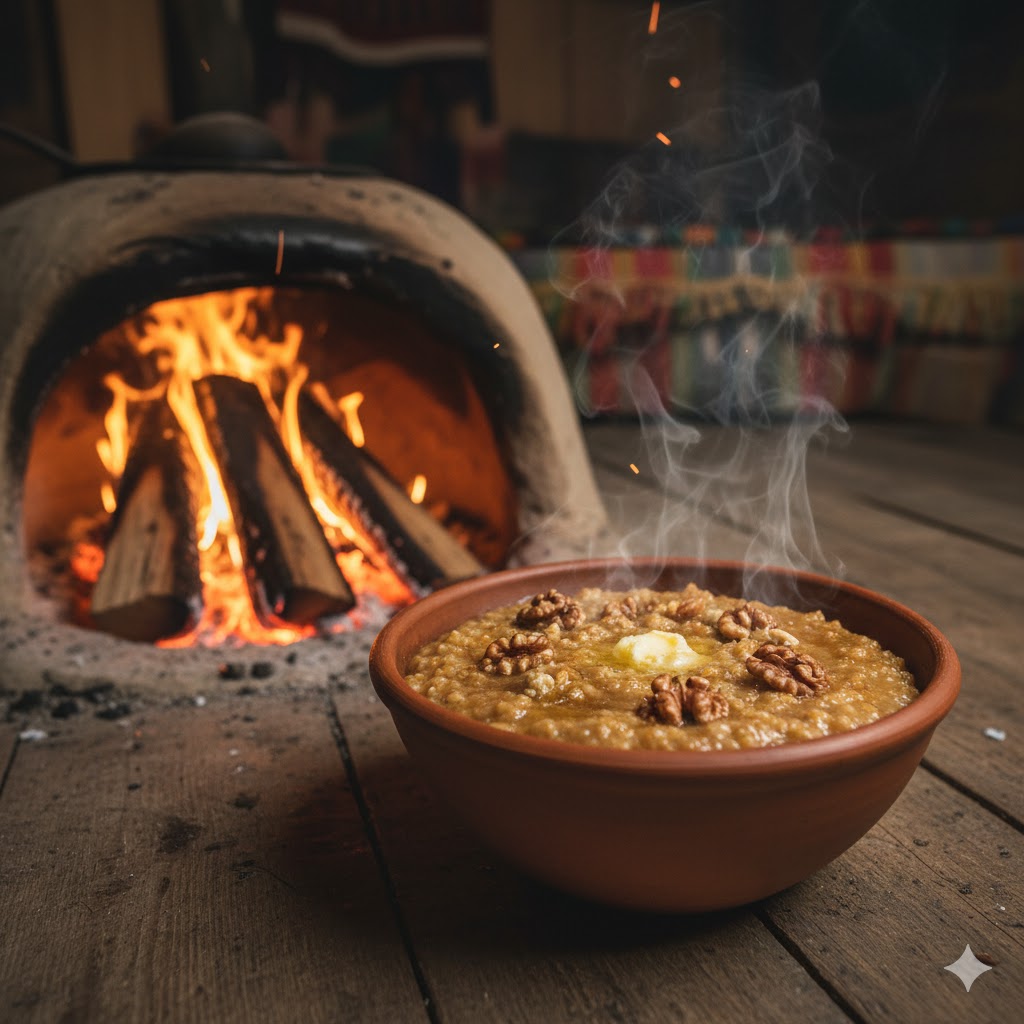
🏕️ 7. Kaghan, Naran & Fairy Meadows — Food for Adventurers
The valleys of Kaghan and Naran are home to a new generation of food stalls and local cafés catering to trekkers and campers. Meals here blend traditional mountain recipes with modern comfort food.
🐟 Trout of Naran — The Streamside Specialty
Crystal-clear rivers in Naran, Jalkhad, and Battakundi are home to fresh Himalayan trout.
It’s usually grilled with lemon and herbs, served with boiled potatoes or local roti.
- Hidden Gem: “River Bank Trout Café” near Lake Saiful Muluk serves the best charcoal-grilled trout with mountain honey glaze.
- Approx. Price: PKR 1,200–1,800 per fish (fresh catch).
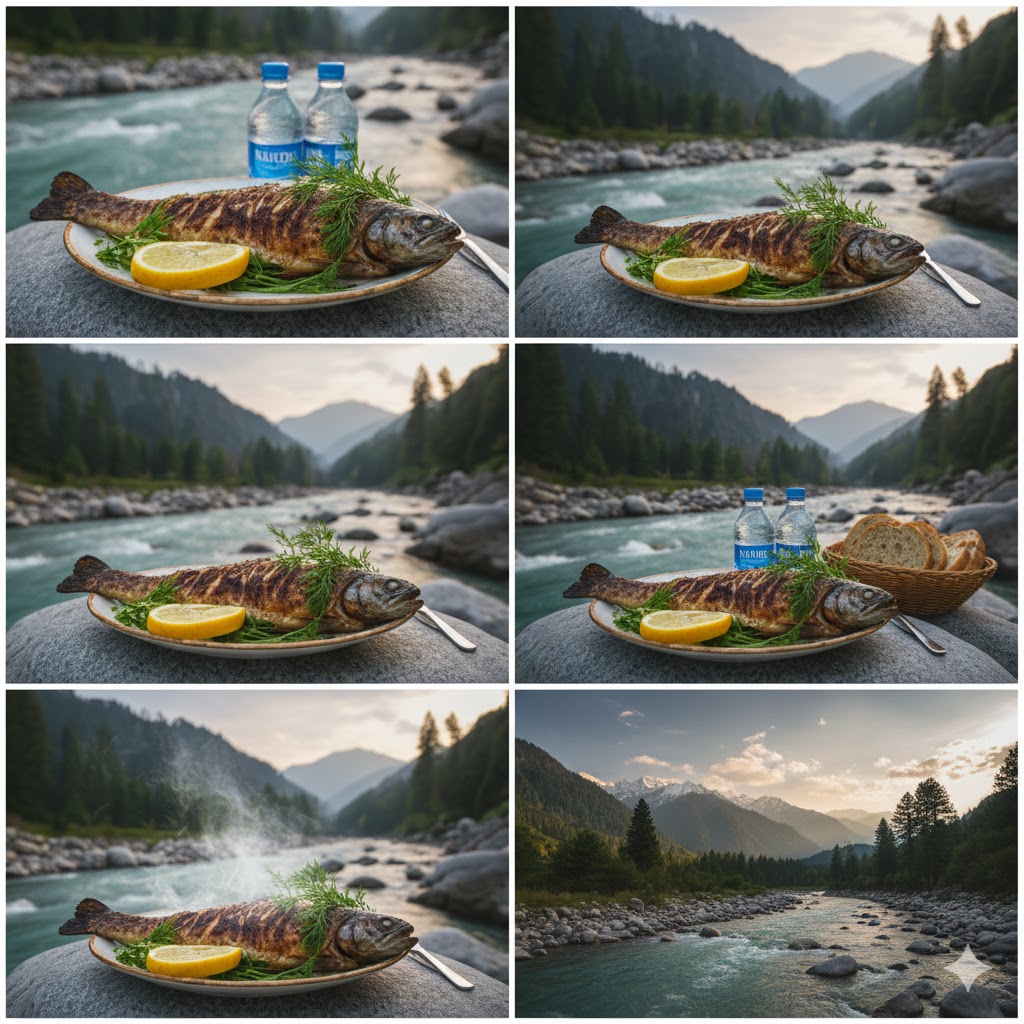
🍚 Makai Roti & Saag — Punjabi Influence in the North
As travelers move toward Babusar Pass, Punjabi-style dishes begin to merge — corn rotis with mustard greens (saag) and homemade butter.
This mix symbolizes the culinary bridge between the plains and peaks — showing how trade routes influenced mountain recipes.
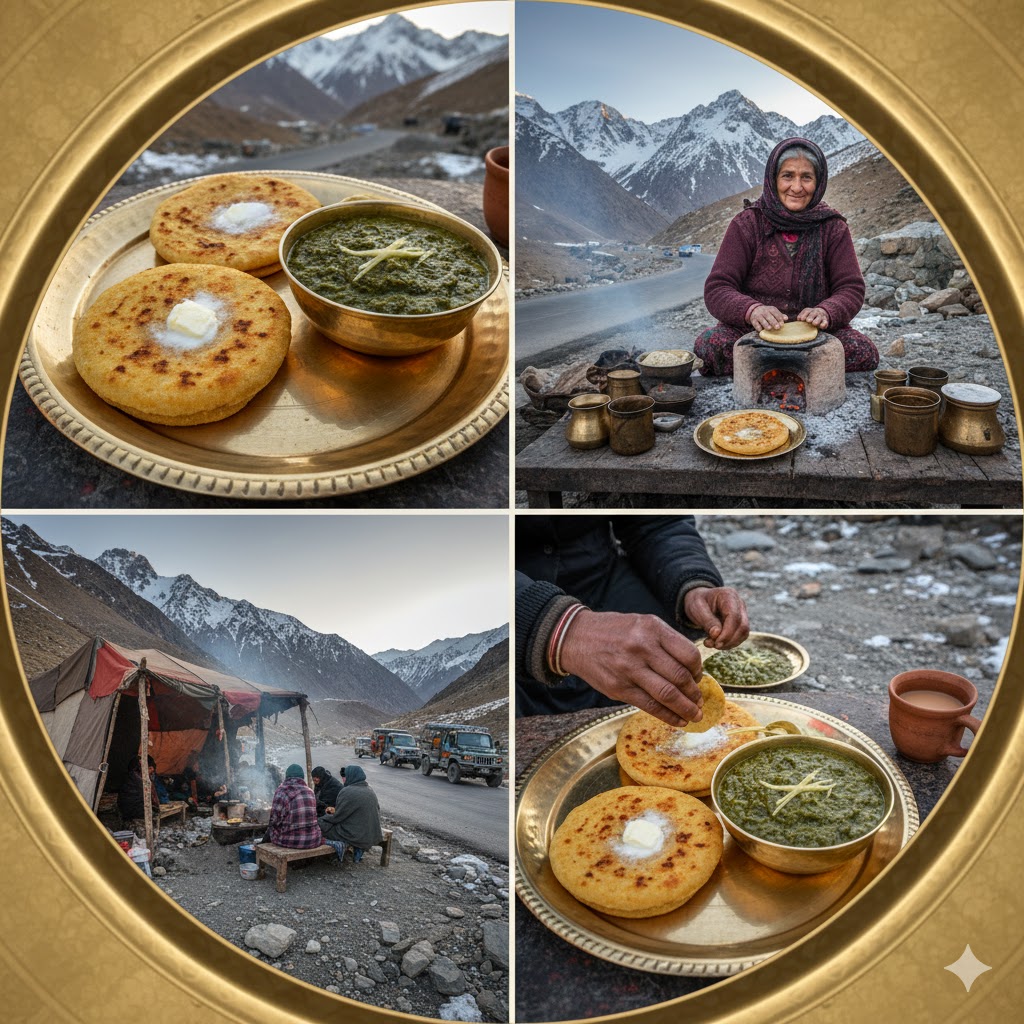
🍢 Bonfire Barbecue Tradition — Fairy Meadows Nights
Fairy Meadows near Nanga Parbat is not only a trekker’s paradise but also a food lover’s dream.
At night, campfire barbecues are common — goat skewers, lentil soup, and fresh bread prepared by local guides.
- Traveler Tip: Try “Raikot Camp BBQ Nights” — known for organic goat meat and apricot drink pairing.
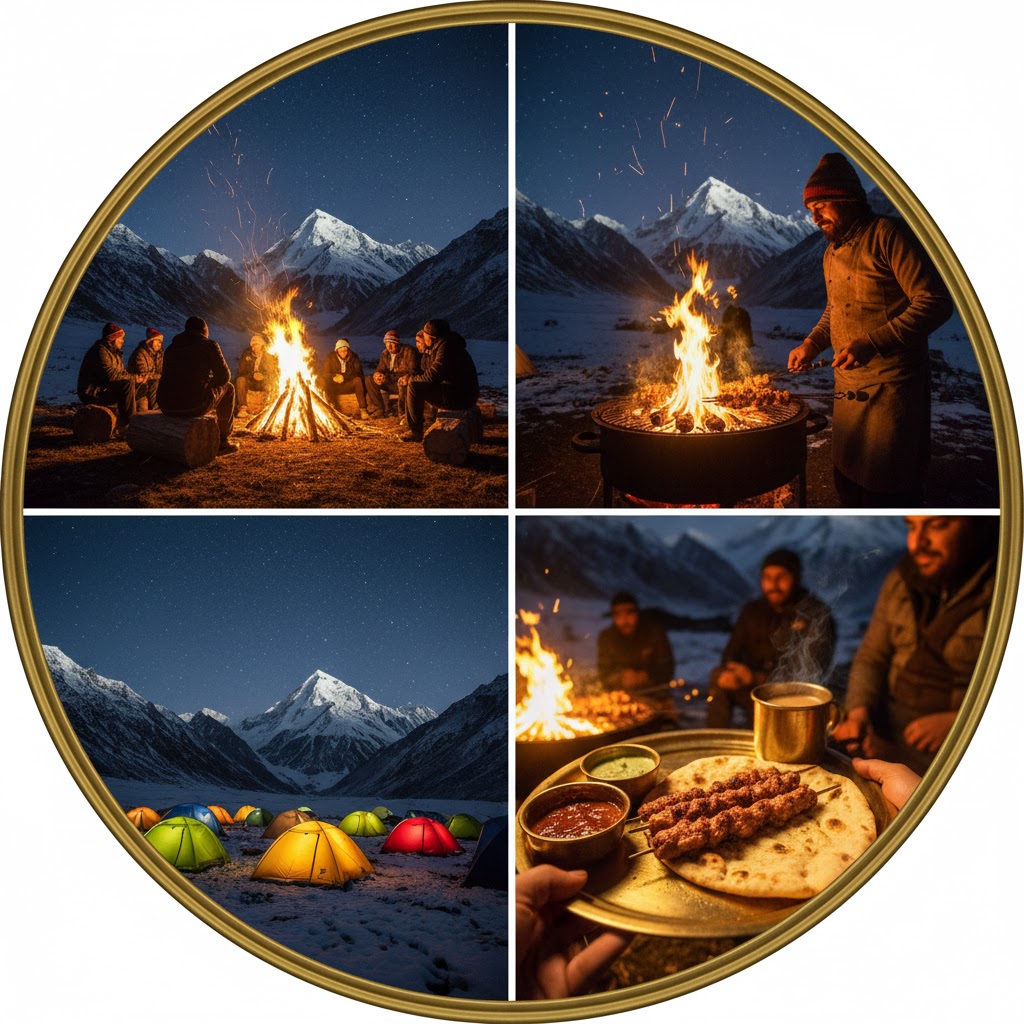
🍯 8. Street Food Culture in Gilgit & Skardu Towns
While most of Northern Pakistan’s food is homemade, street food culture is now thriving in Gilgit and Skardu, led by young chefs and vloggers promoting local heritage.
Popular street snacks include:
- Apricot Donuts (Fried dough with fruit jam filling)
- Yak Cheese Momos (modern Mamtu twist)
- Stone-Fried Noodles with Chopped Greens
- Herbal Drinks from Tumuru and Chamomile
Local Tip: Visit the Gilgit Food Street near Serena Hotel — vloggers often record night-time cooking reels here.

🍽️ 9. Local Tips & Hidden Culinary Trails
- Always Ask for Local Oil: Apricot oil adds authentic flavor — avoid synthetic ones sold in tourist shops.
- Tea Time is Sacred: Never refuse a cup of butter or herbal tea; it’s a cultural handshake.
- Support Women Cooks: Many small mountain cafés are women-run — part of sustainable tourism.
- Buy Apricot and Walnut Jams: Perfect souvenirs, handmade with zero preservatives.
- Follow Local Bloggers: Check @TasteOfGilgit and @HunzaPlate on Instagram for real-time food maps.
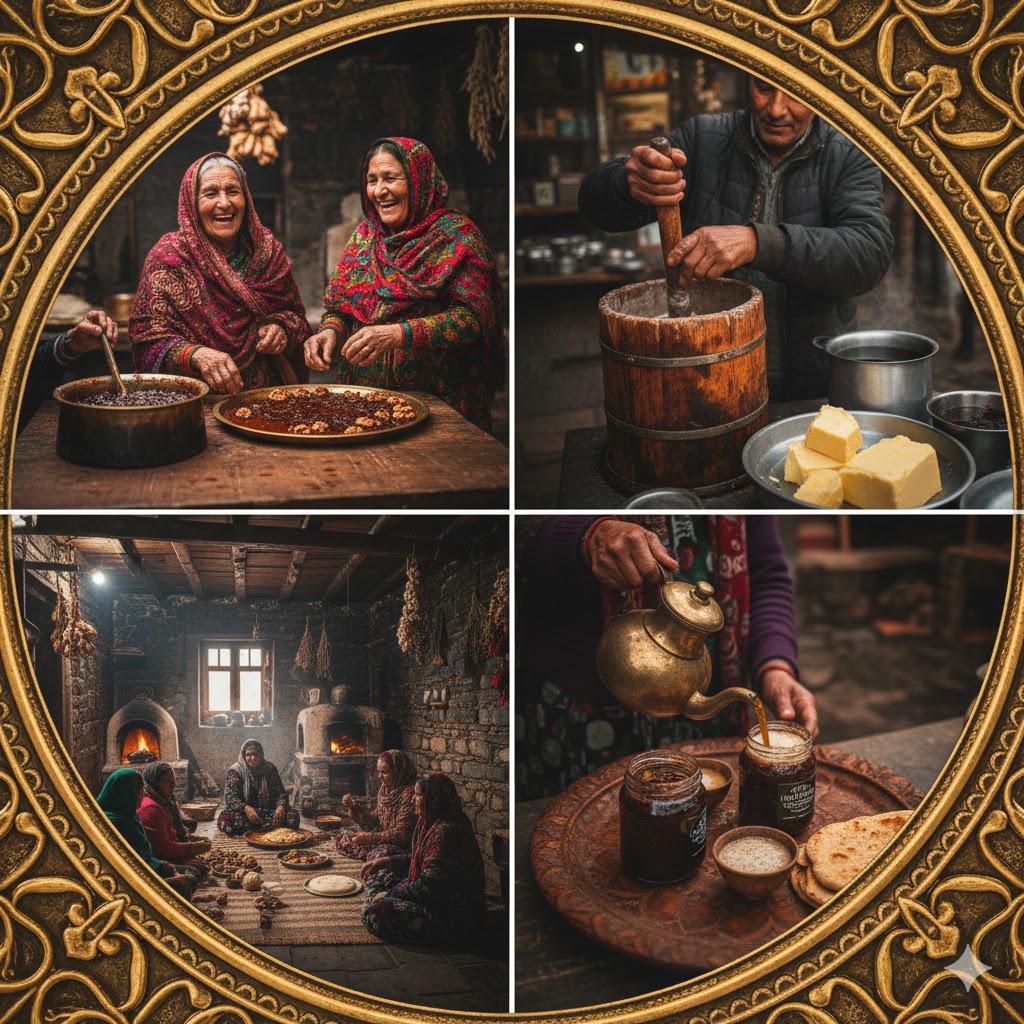
8. Chapshuro — The Hunza Meat Pie of the Mountains
One of the most iconic cultural foods of Northern Pakistan, Chapshuro, is often dubbed as “the Hunza Pizza.” Found across Hunza, Gilgit, and Nagar, this traditional flatbread is stuffed with minced yak, beef, or lamb mixed with chopped onions, chilies, and herbs. Cooked on a tandoor or heavy pan, it develops a crisp outer layer and juicy, flavorful filling that makes it irresistible to every traveler.
Traditionally, locals would prepare Chapshuro during long winter nights, sharing it with family by the hearth while snow blanketed the valley. Today, eateries in Karimabad and Altit serve it fresh, often paired with apricot juice or salty tea — a cultural combination that connects every bite to Hunza’s hospitality.
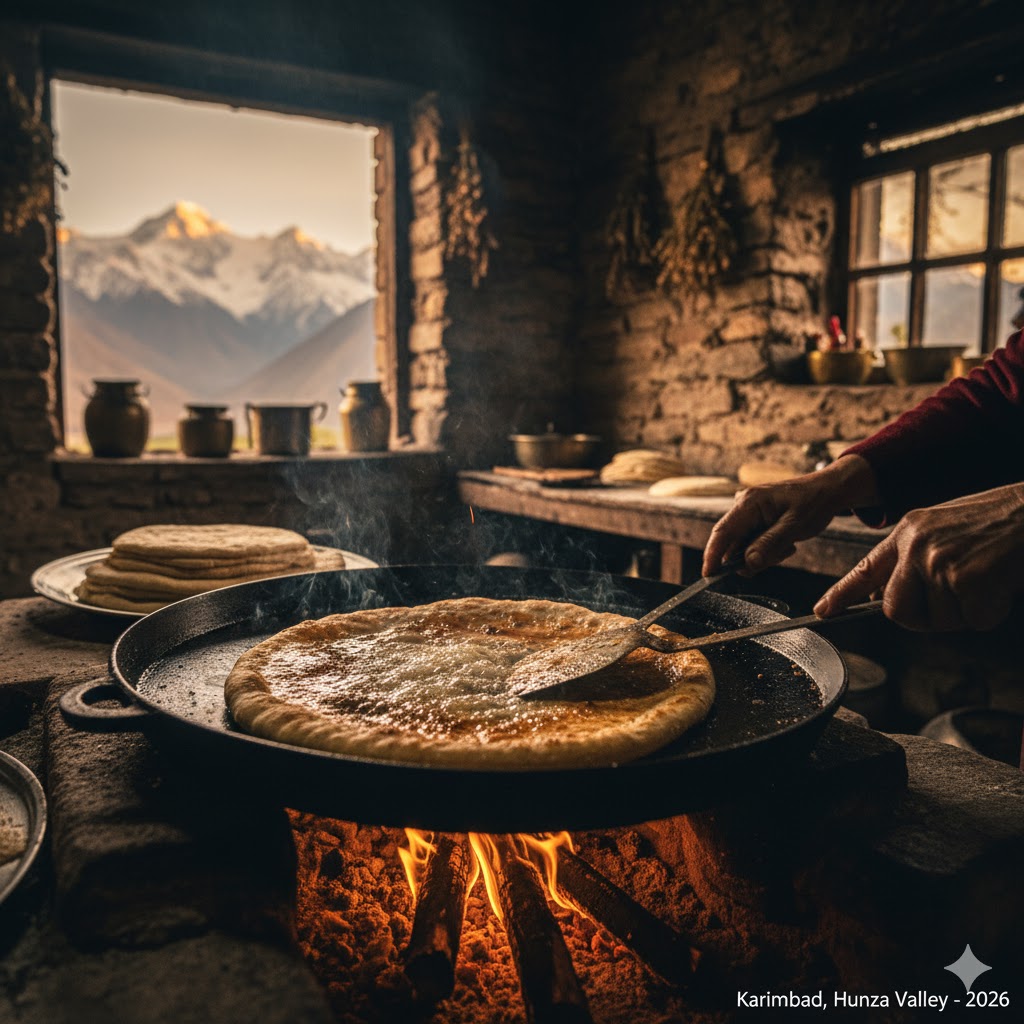
Local Tip: Try Chapshuro from Hunza Food Pavilion or Baltit Café in Karimabad; they bake it the traditional way using wood-fired stoves.
Hidden Gem: Visit Hoper Valley or Naltar Bala — locals make Chapshuro from yak meat sourced directly from nearby glaciers.
9. Dowdo Soup — A Warm Hug from Gilgit
In the cold expanses of Gilgit, Dowdo is more than just a dish — it’s comfort in a bowl. A thick noodle soup with chunks of beef or mutton, wheat noodles, and local vegetables, this meal is a winter staple that warms travelers after a long trek.
Traditionally, Dowdo is served to guests during winter evenings, representing warmth, sustenance, and generosity — essential values in the mountain culture. It’s a must-try dish for those trekking toward Naltar, Yasin, or Ghizer.
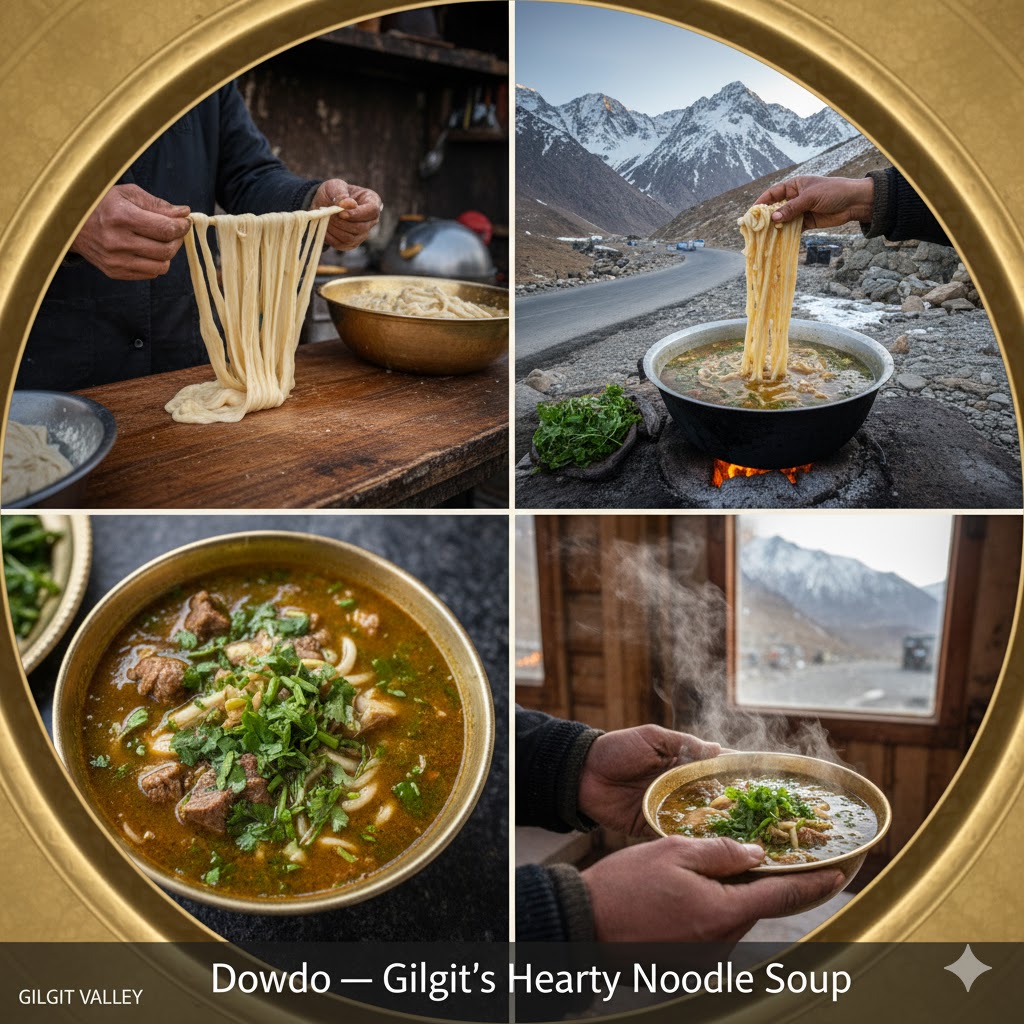
Local Tip: Try Dowdo at Dumani Café Gilgit — they add a hint of butter for a creamy texture.
Ticket Info: Free to taste at local homestays — most families will happily serve you a bowl as part of their hospitality.
Hidden Gem: In Ishkoman Valley, locals make a special Dowdo using apricot oil, a rare variation that gives a nutty aroma.
10. Buckwheat Bread & Local Apricot Jam — The Hunza Breakfast Duo
The Cultural Foods of Northern Pakistan also include a healthy breakfast tradition — buckwheat bread paired with homemade apricot jam. Buckwheat, locally grown on terraced fields, is turned into a dense, gluten-free bread rich in fiber and minerals.
The jam, made from sun-dried apricots, reflects Hunza’s ancient preservation culture. Locals store these fruits through the long winter months, using them as a vital energy source when fresh produce is scarce.
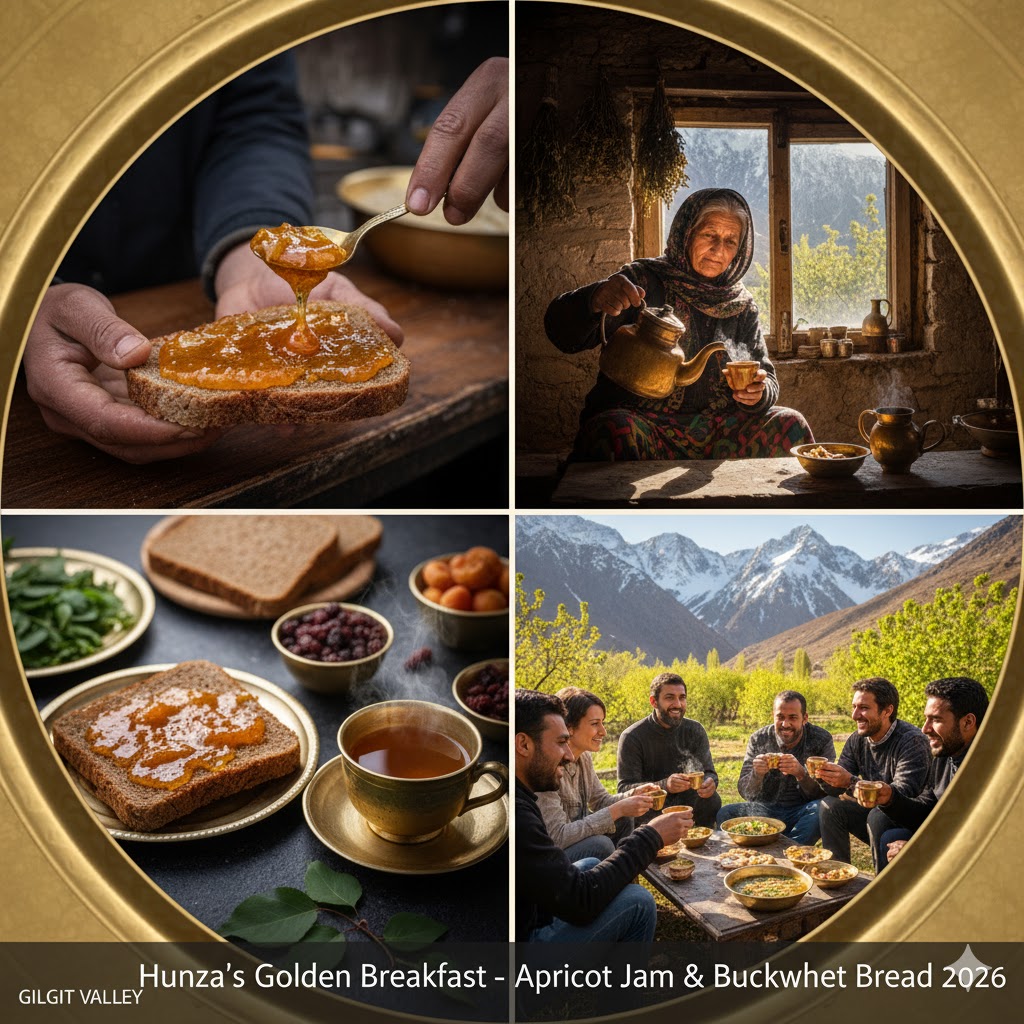
Local Tip: Visit Hidden Paradise Café in Altit — their apricot jam and buttered buckwheat bread breakfast is legendary among backpackers.
Hidden Gem: Ask locals about Ghulkin Jam — a family recipe made with wild apricots found near Passu Glacier.
11. Balti Gosht — The Spicy Essence of Baltistan
Originating from Skardu and Shigar, Balti Gosht is one of the most famous dishes in the Cultural Foods of Northern Pakistan. The word “Balti” refers to the deep cooking pot used — a round metal wok.
Cooked with goat or beef, tomato gravy, onions, and a secret blend of Himalayan spices, Balti Gosht is slow-cooked to perfection. Traditionally, it’s served with warm naan or rice, enjoyed during family gatherings and wedding feasts.
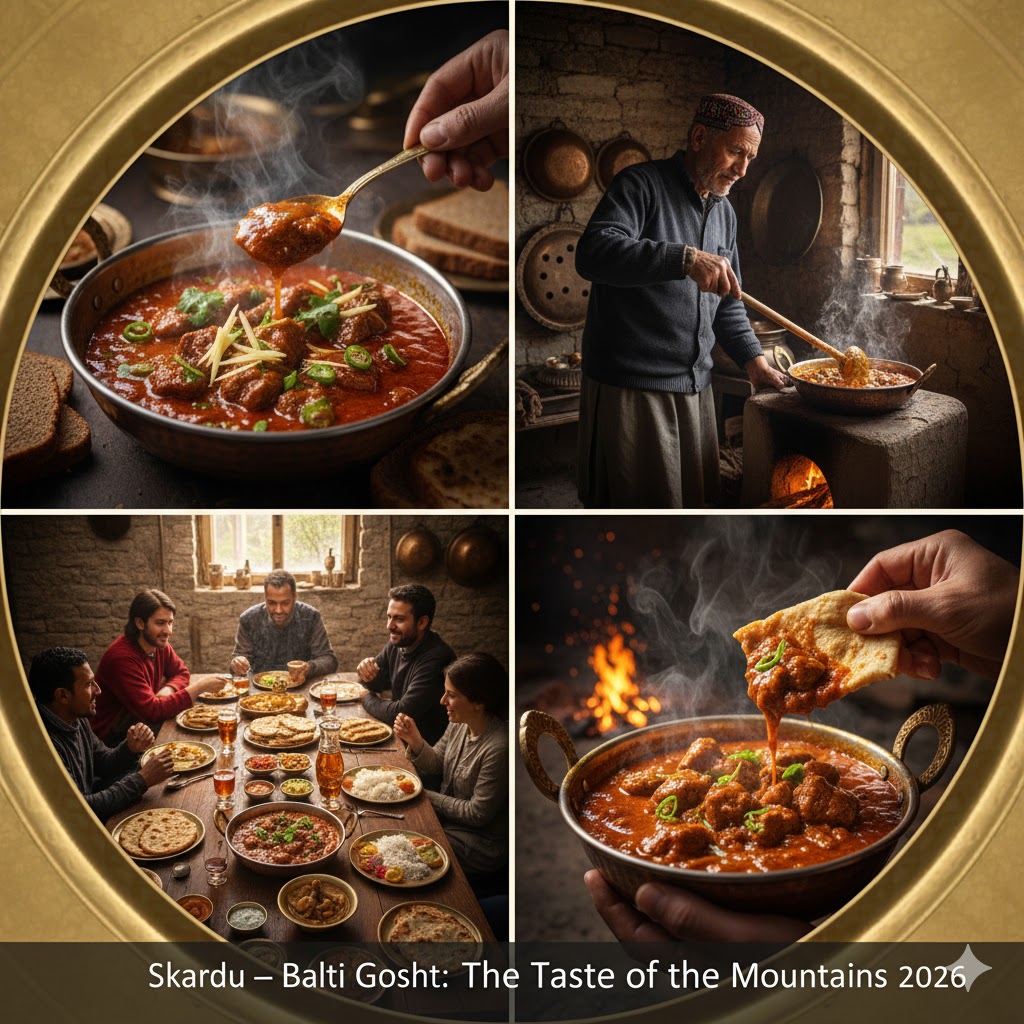
Local Tip: Visit Shangrila Resort Restaurant for a refined version or Sadpara Inn for authentic home-style taste.
Hidden Gem: In Khaplu, locals use apricot oil instead of ghee, giving Balti Gosht a distinctive nutty flavor.
12. Khapse — Crispy Festive Cookies from Baltistan
No celebration in Gilgit-Baltistan is complete without Khapse — deep-fried cookies made from flour, sugar, and butter. These golden delights are often shaped into intricate patterns and fried until crisp.
Khapse are traditionally prepared during religious and cultural festivals like Losar (Balti New Year) and weddings, symbolizing prosperity and joy. Locals gift them to guests and relatives as a sweet gesture.

Local Tip: During Losar in Skardu, try Khapse fresh from local homes — they’re lighter and crispier than store versions.
Hidden Gem: In Thalle Valley, some families make a rare butter Khapse — softer and infused with almond oil.
13. Sharbat-e-Abrak — The Hidden Summer Cooler
Among the Cultural Foods of Northern Pakistan, Sharbat-e-Abrak stands out as a refreshing drink rarely known outside Gilgit-Baltistan. Made from mulberry leaves, basil seeds, and wild herbs, this natural cooler is a local secret to surviving the intense summer treks.
Traditionally sold in copper tumblers during festivals and polo matches, it’s both hydrating and medicinal.
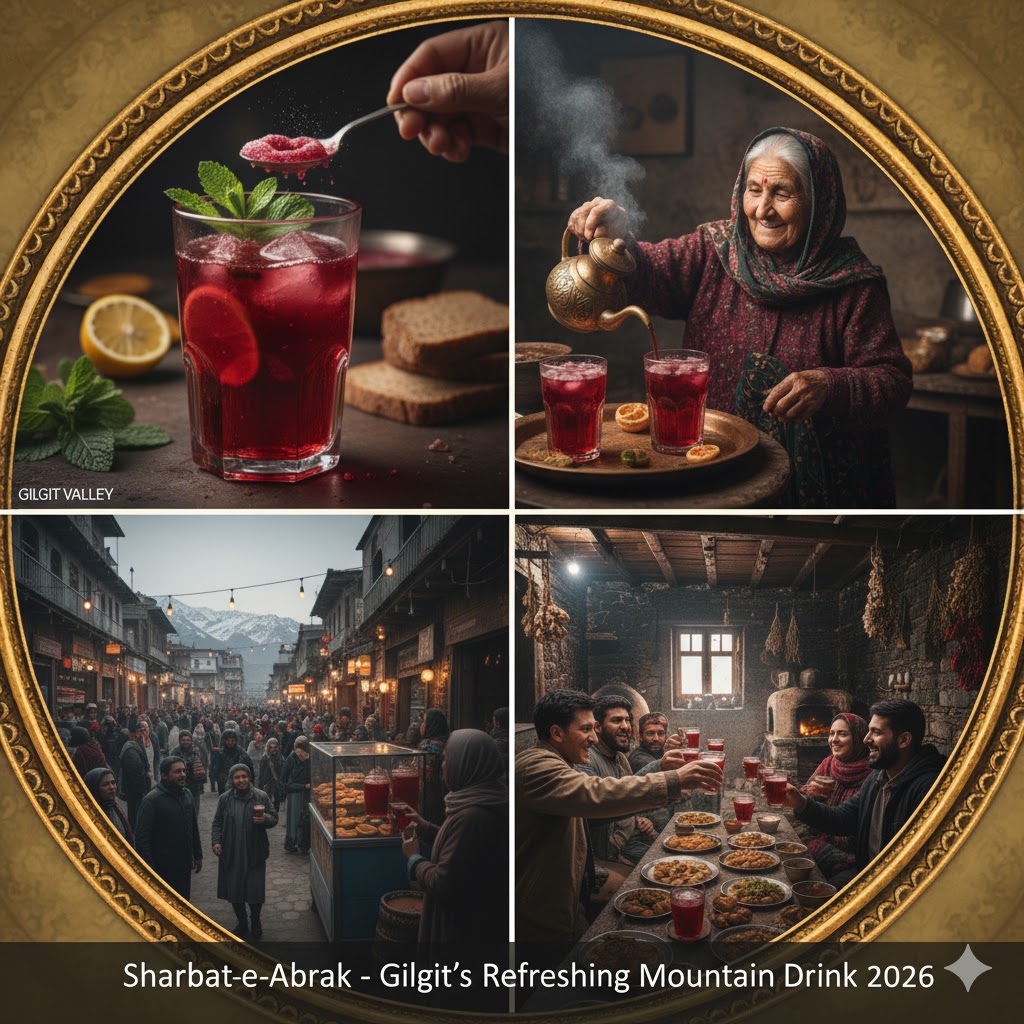
Local Tip: Available at Ghizer Summer Polo Festival stalls — always drink it cold for full flavor.
Hidden Gem: A small café near Satpara Lake makes a special version with mountain honey and mint.
14. Local Cheese of Yasin — Hidden Dairy Delight
Northern Pakistan’s remote Yasin Valley hides a delicious secret — local handmade cheese aged in stone huts. It’s dense, mildly salty, and served with flatbread or apricot jam.
Farmers prepare it using yak or goat milk, aged naturally at high altitude for months. The result is a smoky, tangy taste reminiscent of traditional European cheeses — but with a Himalayan soul.
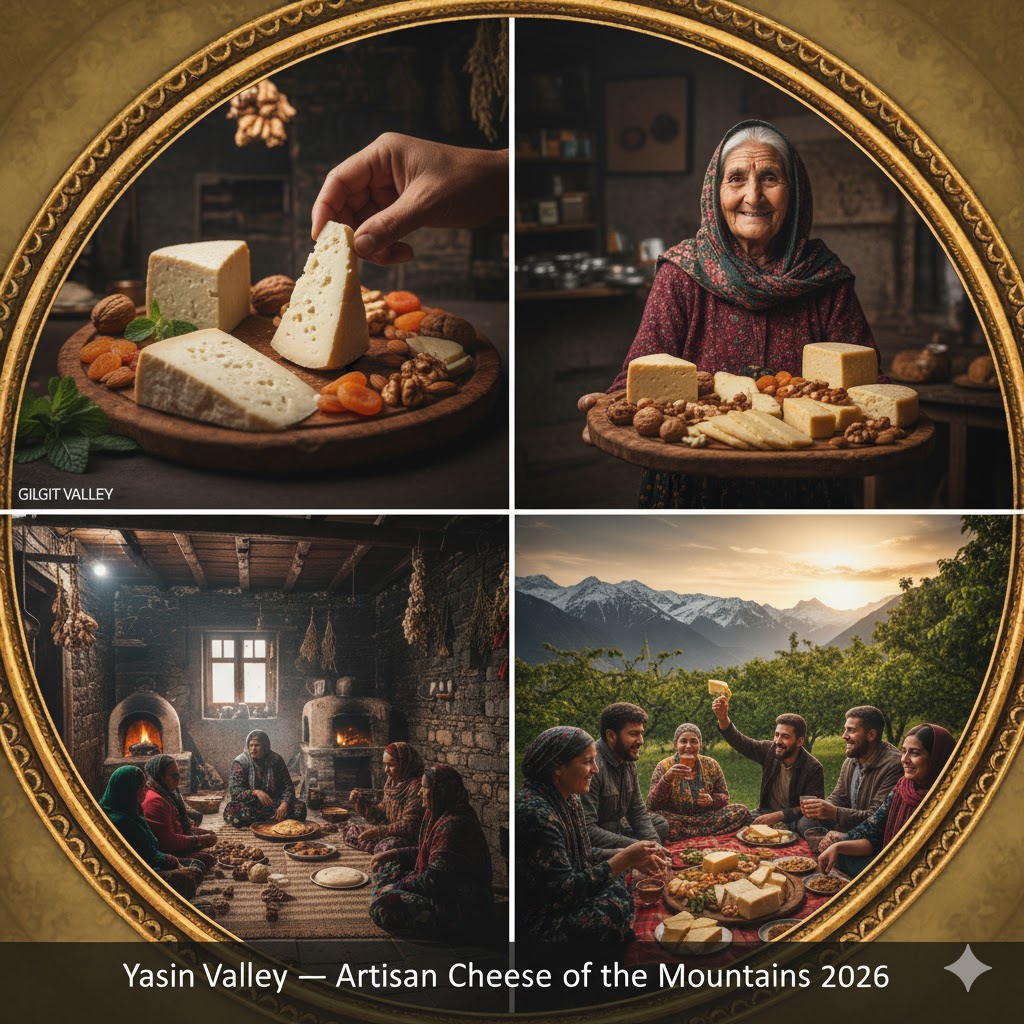
Local Tip: Ask locals in Darkut Valley to show their cheese cellars; they’ll proudly offer samples.
Hidden Gem: Some villages use wild thyme in the cheese-making process — a rare aromatic variation.
15. Gyal — Traditional Balti Flatbread
A must-have breakfast item, Gyal is the backbone of Baltistan’s daily diet. It’s a thick, slightly chewy bread made from wheat or barley flour, often paired with butter tea or homemade yogurt.
In Baltistan, Gyal symbolizes sustenance and community — families gather each morning around a clay stove as the bread bakes and tea boils nearby.
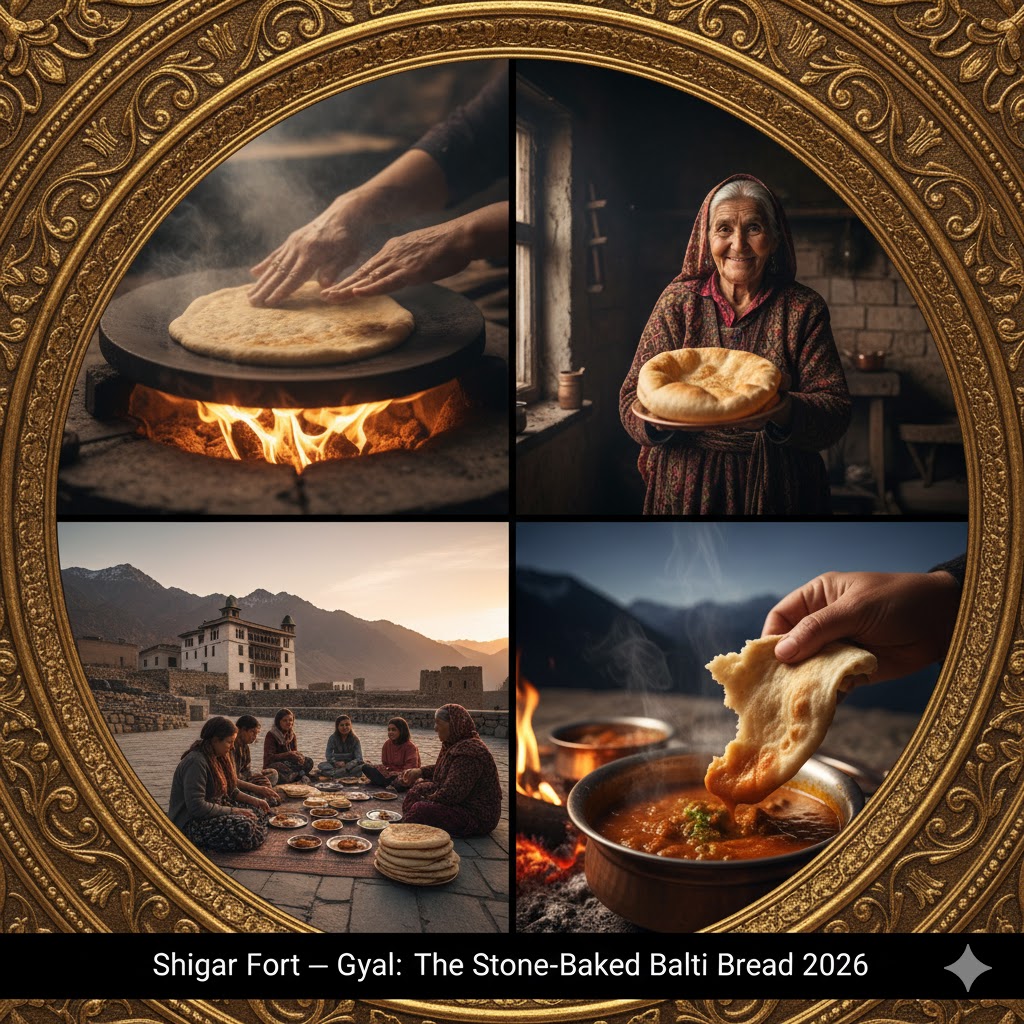
Local Tip: Try Gyal at Khaplu Palace Café for an authentic touch with apricot oil drizzle.
Hidden Gem: Locals in Hussainabad bake Gyal with walnut flour, giving it a smoky nutty aroma.
16. Yak Karahi — The Wild Taste of the High Mountains
One of the rarest Cultural Foods of Northern Pakistan, Yak Karahi is a prized delicacy served in the high-altitude regions of Khunjerab and Misgar. Made with yak meat, onions, garlic, and wild herbs, it’s known for its rich, gamey flavor and high protein content.
This dish reflects the self-sustaining mountain lifestyle, where yak meat is not only food but a symbol of survival in harsh climates.
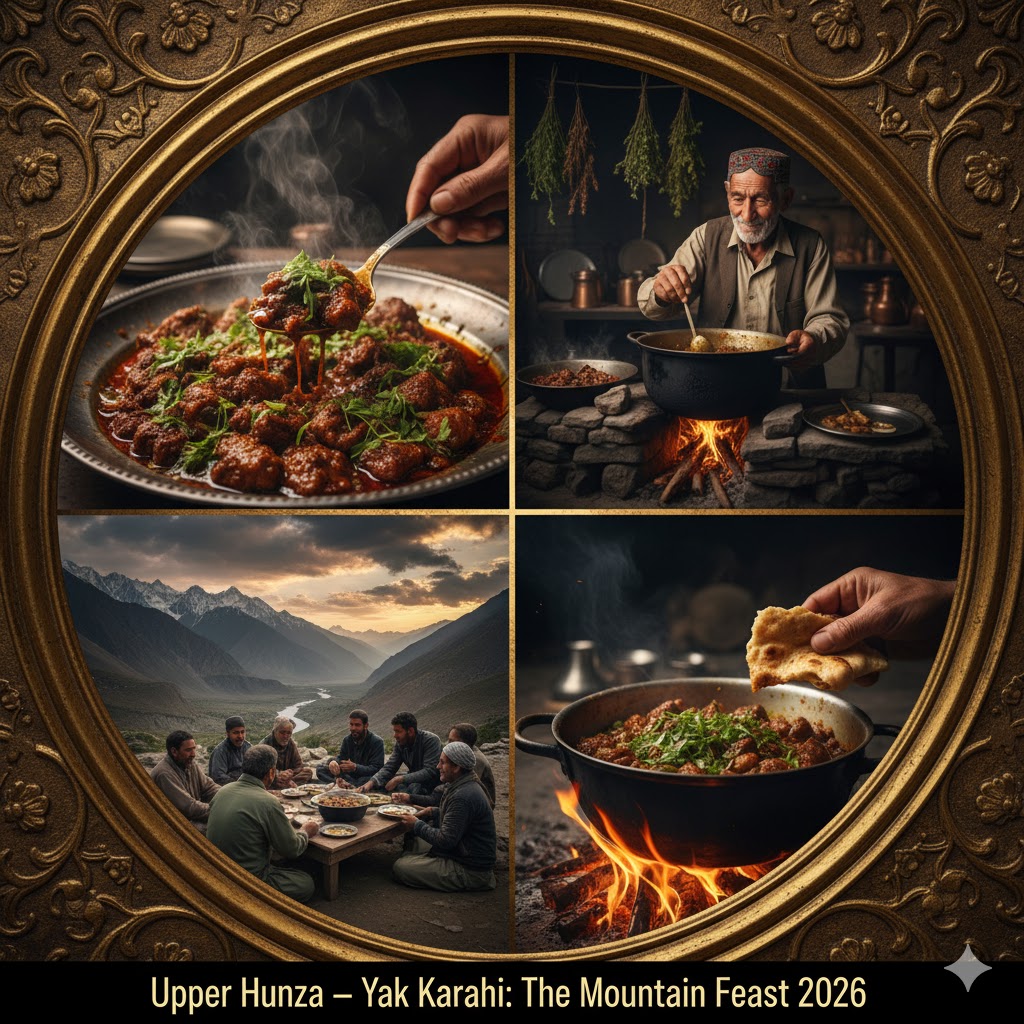
Local Tip: Visit Sost Border Café — they occasionally serve fresh Yak Karahi for tourists traveling toward China.
Hidden Gem: In Shimshal Valley, yak meat is smoked over juniper wood before cooking — adding a unique earthy aroma.
17. Balay Soup — The Gilgit Winter Broth of Strength
When winter sweeps across the mountains, locals turn to Balay Soup, one of the most beloved Cultural Foods of Northern Pakistan. This thick, creamy soup is made with hand-pulled noodles, minced beef or mutton, garlic, and clarified butter. Balay is a powerhouse of energy, designed to help mountain dwellers endure sub-zero temperatures.
Traditionally, Balay is slow-cooked over wood fires — a technique preserved for centuries. You can explore its origins further at the Pakistan Tourism Development Corporation (PTDC) official heritage food section.
Must See: For a scenic culinary journey, pair your Balay tasting experience with the Hidden Lakes of Northern Pakistan Guide to discover nearby food stalls and mountain eateries.
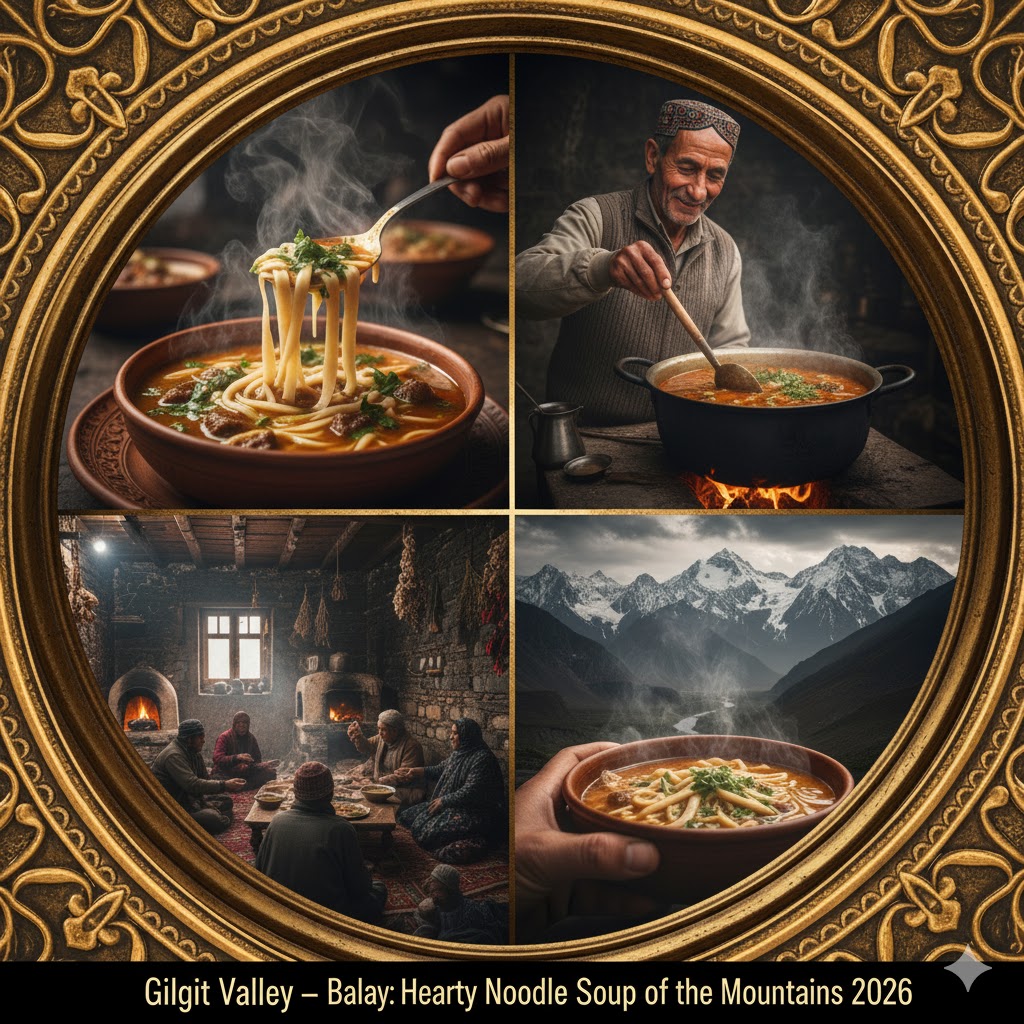
Local Tip: Try Balay at Hidden Valley Inn Gilgit or Hunza Darbar Café. It’s best enjoyed with a side of Gyal bread.
Hidden Gem: In Phander Valley, a unique version of Balay uses goat milk instead of butter, adding a natural creaminess.
18. Walnut Kebabs — The Secret Vegetarian Delicacy
Among the diverse Cultural Foods of Northern Pakistan, Walnut Kebabs remain a hidden vegetarian treasure. These are made from ground walnuts, chickpea flour, onions, and Himalayan spices, shaped into patties and lightly fried.
They are a common dish during fasting seasons or community feasts when meat is scarce. The aroma of roasted walnuts and the hint of cumin make it a true northern delicacy — light, nutritious, and packed with energy for trekkers.
According to the Hunza Food Heritage Foundation, walnut-based recipes trace back to Silk Route influences.
Internal Link: Check out how walnut-based dishes complement the meals along your Skardu Valley Adventures, especially in Shigar and Khaplu cafés.
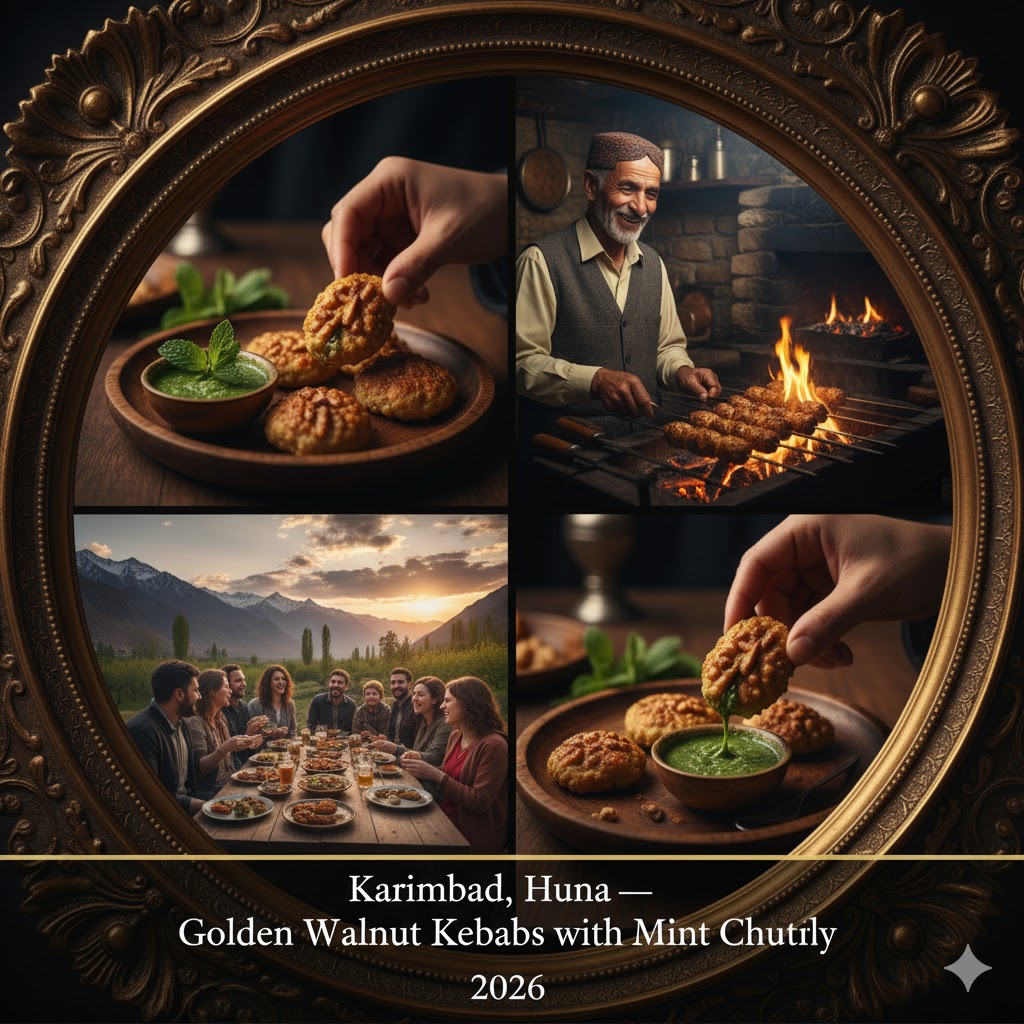
Local Tip: Don’t miss Cafe De Hunza’s version — their walnut kebabs are served with apricot chutney.
Hidden Gem: Villages in Upper Gojal season walnut kebabs with crushed dried apricot skins for an unusual tang.
19. Herbal Teas of Hunza — Nature’s Healing Elixir
The crisp air and pure springs of Hunza Valley give rise to a variety of herbal teas, locally known as Tumoro Chai. Made from wild thyme (tumoro), rose petals, or mint, these teas are caffeine-free and believed to strengthen the immune system.
Every family in Hunza has its unique recipe — some add yak butter, others infuse apricot kernels or mountain honey. It’s an integral part of local hospitality; no guest leaves a Hunza home without sharing a cup.
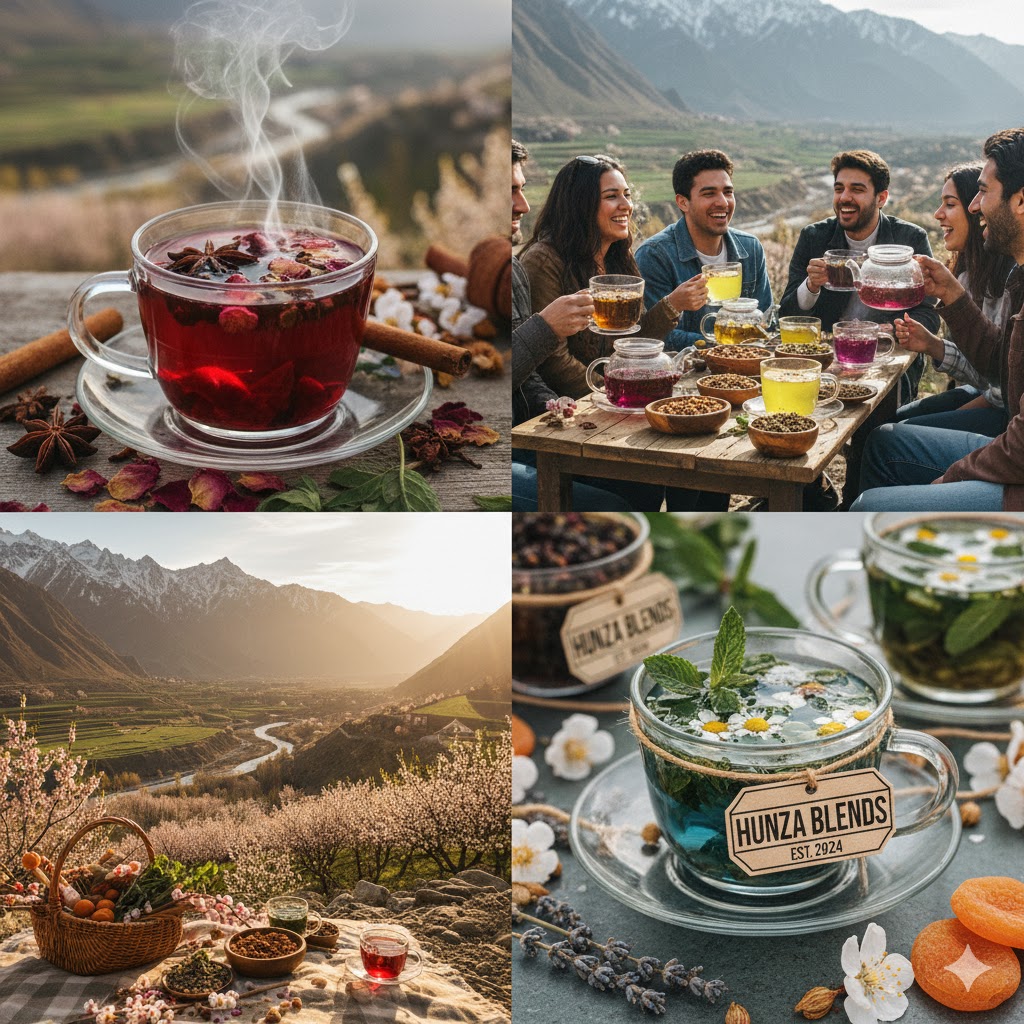
Local Tip: Buy dried tumoro leaves from Karimabad Bazaar — locals claim they’re best brewed at sunrise.
Hidden Gem: In Naltar Valley, locals mix Tumoro Chai with wild rose petals for fragrance and color.
20. Apricot Desserts — The Soul of Hunza’s Sweet Culture
Apricots are the heart of Hunza’s identity and a highlight of Cultural Foods of Northern Pakistan. From apricot halwa to dried apricot rolls, every dessert celebrates the valley’s golden fruit.
During harvest season (July–August), villages turn into apricot havens. Women dry the fruits on rooftops, creating jams, oils, and sweets that sustain families through winter. Apricot oil halwa — known locally as Mishmish Halwa — is made with whole wheat, sugar, and pure apricot oil, resulting in a rich, nutty flavor.
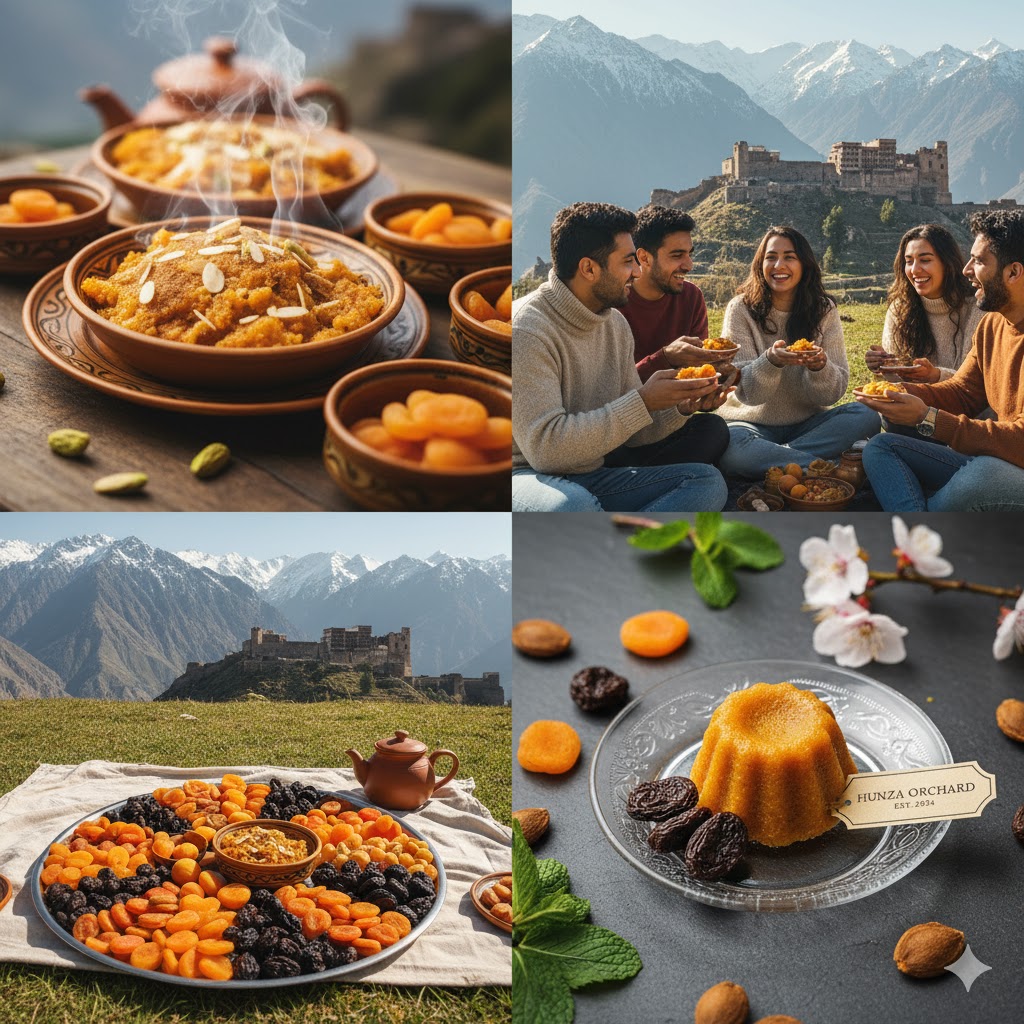
Local Tip: Visit Cafe Glacier Breeze in Passu — their apricot halwa is famous across the Karakoram Highway.
Hidden Gem: Try Ganish Village’s “Apricot Leather” — sun-dried apricot sheets rolled into chewy snacks.
21. Chupshuro with Yak Cheese — A Modern Twist
A creative evolution of traditional Chapshuro, this modern dish combines local meat with aged yak cheese from Khunjerab. The fusion creates a unique balance of spice and creaminess.
This adaptation has gained popularity among vloggers and food travelers who showcase Cultural Foods of Northern Pakistan on social media. It’s the perfect blend of authenticity and innovation.
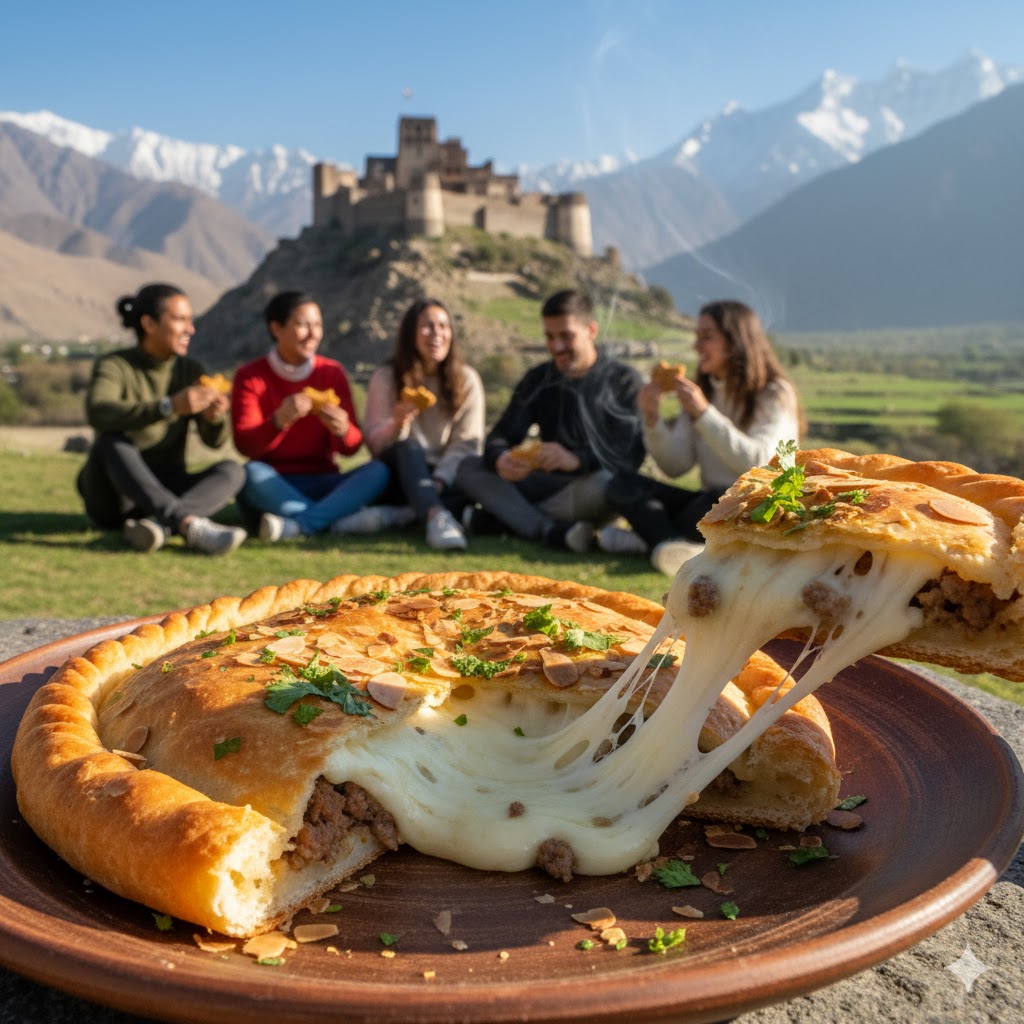
Local Tip: The Eagle’s Nest Hotel in Duiker serves one of the best versions overlooking Rakaposhi.
Hidden Gem: In Misgar Valley, families add wild garlic for a sharp mountain aroma.
22. Phitti — The Bread of Hospitality
.
Phitti is not just food — it’s a gesture of welcome. This Balti bread is baked inside a cylindrical clay oven and served during every guest visit, festival, or celebration.
It’s prepared with wheat flour, salt, and milk, kneaded by hand and baked to a perfect golden-brown crust. When paired with butter tea (noon chai), Phitti embodies the simplicity and warmth of mountain life.
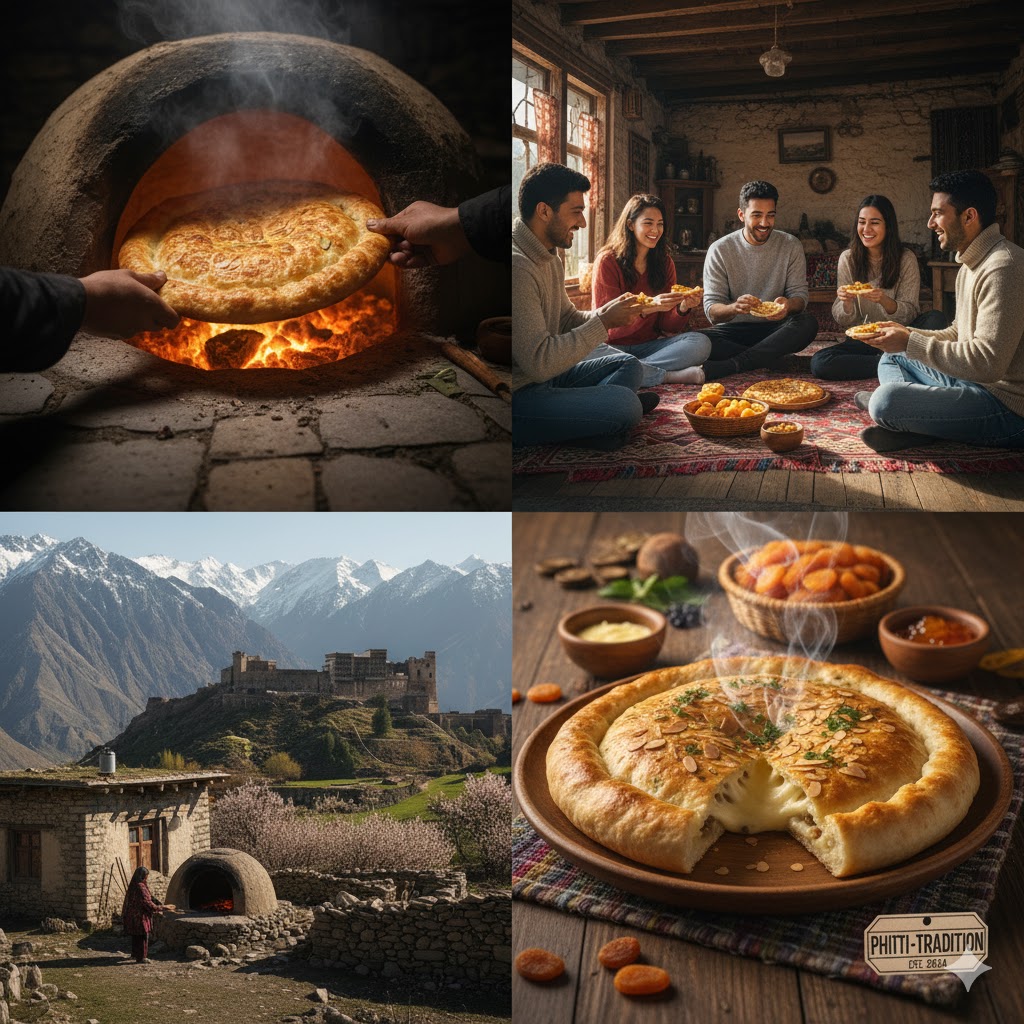
Local Tip: In Khaplu, Phitti is served with apricot jam at breakfast — a must-try combo.
Hidden Gem: Villagers in Shigar sometimes bake Phitti with wild herbs and serve it during weddings.
23. Butter Tea (Noon Chai) — The Drink of the Peaks
A staple of Baltistan and Ladakh, Butter Tea, or Noon Chai, is made from green tea leaves, salt, and butter. While it may seem unusual to outsiders, this tea provides warmth and hydration essential for survival in cold climates.
The tea’s pinkish hue comes from baking soda, and it’s often accompanied by Phitti or Gyal bread. Locals drink several cups daily, especially during festivals or long treks.

Local Tip: Don’t miss Butter Tea House Skardu for an authentic experience with local music.
Hidden Gem: In Hussainabad Village, some families use yak butter, giving the tea an extra rich, smoky flavor.
24. Hidden Gem — Gappa Shoro (Cold Meat Sandwich of Hunza)
An unknown delight among Cultural Foods of Northern Pakistan, Gappa Shoro is a cold sandwich made from leftover Chapshuro meat wrapped in barley bread and carried by shepherds.
It’s an on-the-go mountain snack that can stay fresh for two days, ideal for hikers and porters crossing glacier routes.
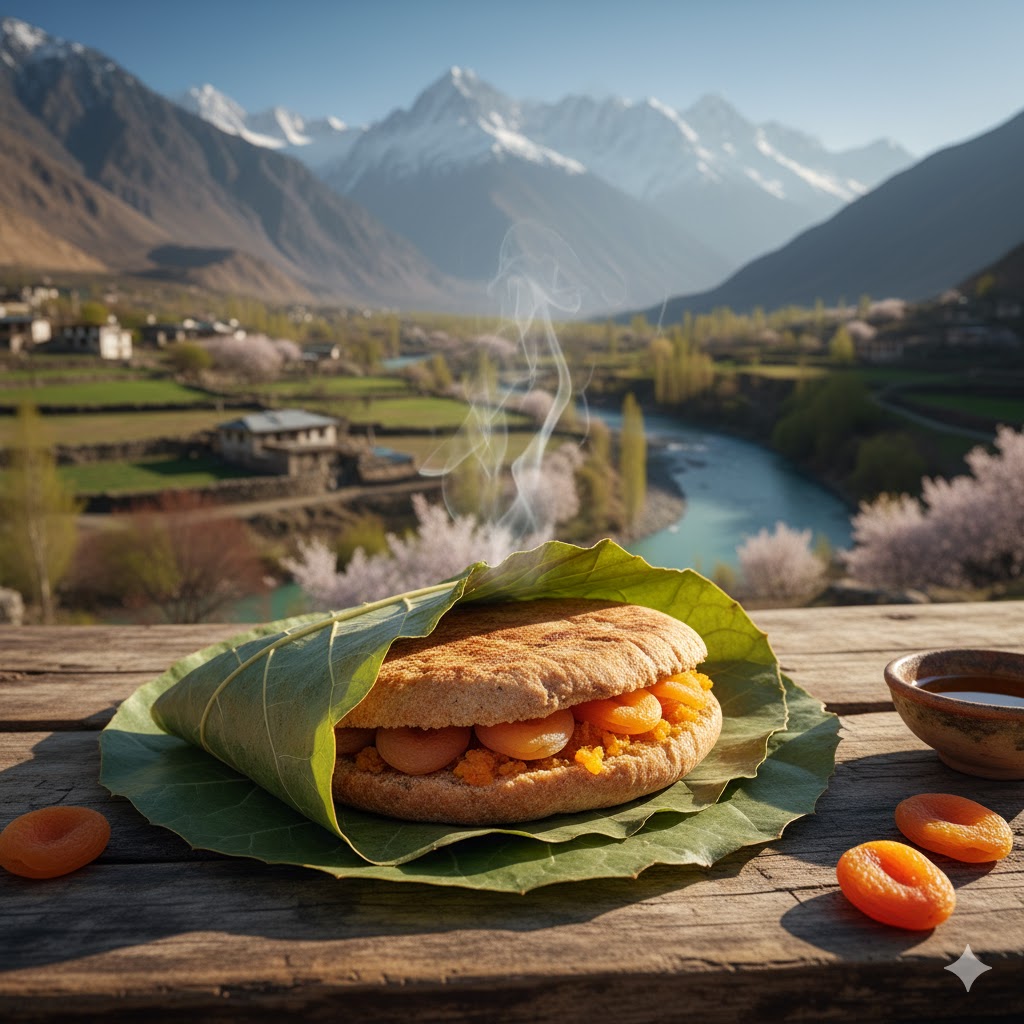
Local Tip: Try it at Hoper Valley Village Café — they prepare it daily for trekkers.
Hidden Gem: Locals sometimes stuff it with wild herbs and chili flakes, creating a spicy trail meal.
25. The Culinary Routes of Northern Pakistan
Travelers seeking to experience the full range of Cultural Foods of Northern Pakistan can follow these regional culinary trails:
- Hunza Heritage Food Route: Karimabad → Altit → Passu → Ghulkin
- Try apricot desserts, Chapshuro, and herbal teas.
- Gilgit & Ghizer Valley Route: Gilgit → Yasin → Phander → Ishkoman
- Known for Dowdo soup, walnut kebabs, and local cheeses.
- Skardu–Shigar–Khaplu Route: Skardu → Shigar → Khaplu → Thalle Valley
- Famous for Balti Gosht, Phitti, and butter tea.
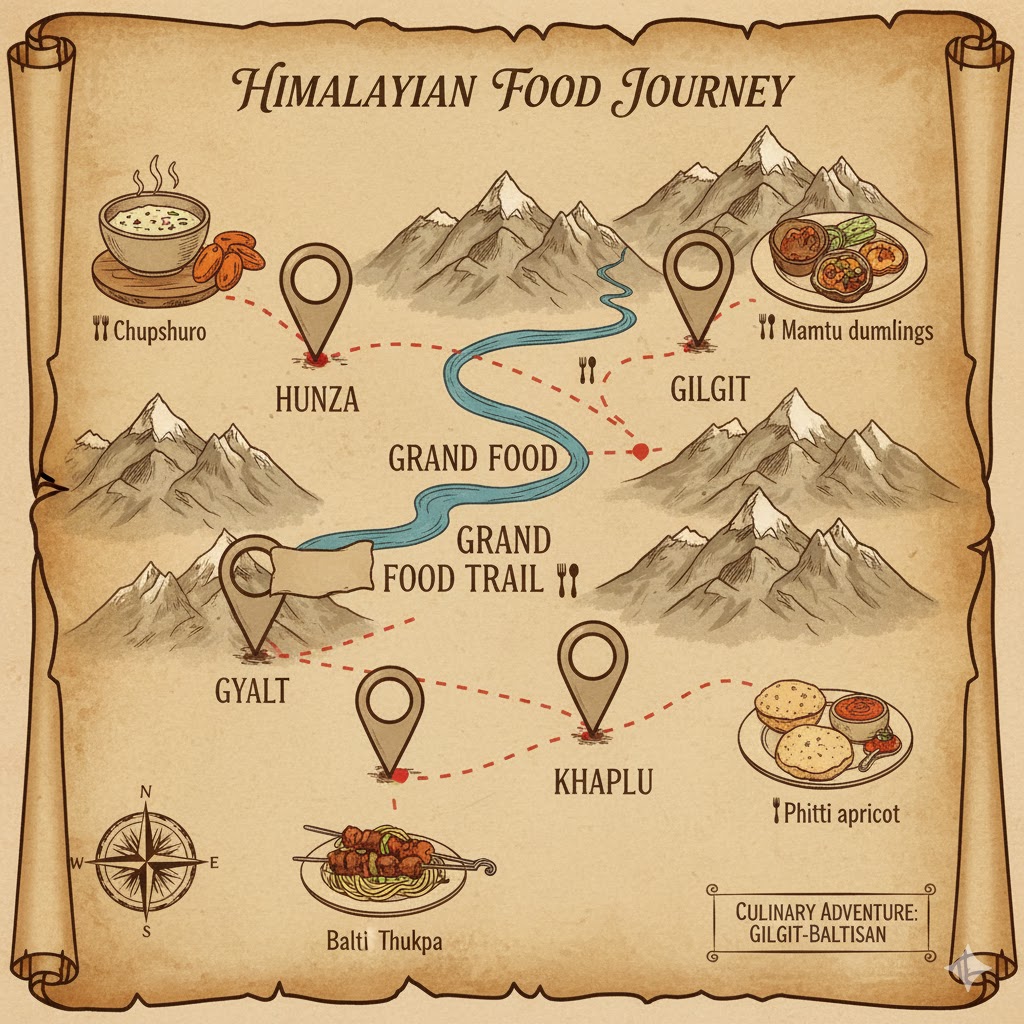
Local Tip: Visit during Spring Blossom Season (March–April) — food stalls, festivals, and apricot-based treats are everywhere.
FAQs: Cultural Foods of Northern Pakistan
Q1: What are the most famous traditional dishes of Northern Pakistan?
A: Chapshuro, Balti Gosht, Dowdo, and Butter Tea are the signature dishes representing Gilgit-Baltistan’s rich culinary identity.
Q2: Are these foods spicy?
A: Most traditional dishes use mild spices; the focus is on natural flavors of herbs, yak meat, and local butter.
Q3: Where can I find authentic local food in Hunza or Skardu?
A: Family-run cafes like Hunza Food Pavilion and Baltistan Traditional Kitchen offer the best homemade-style food.
Q4: Is it easy for tourists to find vegetarian food?
A: Yes, walnut kebabs, buckwheat bread, apricot desserts, and herbal teas are vegetarian-friendly.
Q5: When is the best time to enjoy these cultural foods?
A: Spring to early autumn (March–October) is ideal; many festivals and harvest events offer local specialties.
Q6: Do locals still use traditional methods of cooking?
A: Absolutely. Most mountain communities use clay ovens, wood fires, and copper pots for authentic taste.
Q7: Can tourists learn to cook these dishes?
A: Yes, several guesthouses in Hunza and Skardu offer cooking classes where travelers can make Chapshuro or Dowdo.
Q8: Are there food festivals in Northern Pakistan?
A: Events like the Hunza Cultural Festival and Baltistan Apricot Harvest Fair feature local dishes, cooking demos, and tastings.
Traveler Guide: A Taste That Defines the Mountains
The Cultural Foods of Northern Pakistan are more than meals — they are living symbols of resilience, heritage, and harmony between people and nature. From the smoky aroma of Chapshuro to the soothing warmth of butter tea, every flavor tells a story of centuries-old traditions preserved by mountain hearts.
Each valley — Hunza, Gilgit, Baltistan, or Khaplu — invites travelers not just to taste, but to feel the rhythm of life in every bite. As tourism rises and cultural exchanges expand, these foods stand as culinary ambassadors of Pakistan’s proud northern identity — a timeless invitation to eat, explore, and remember.
References:

